#Fort York Guard Royal Artillery
Text

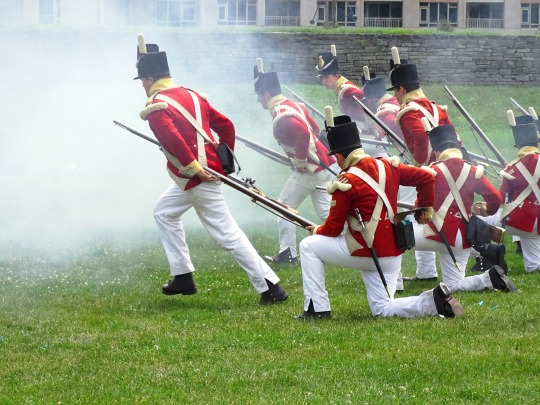
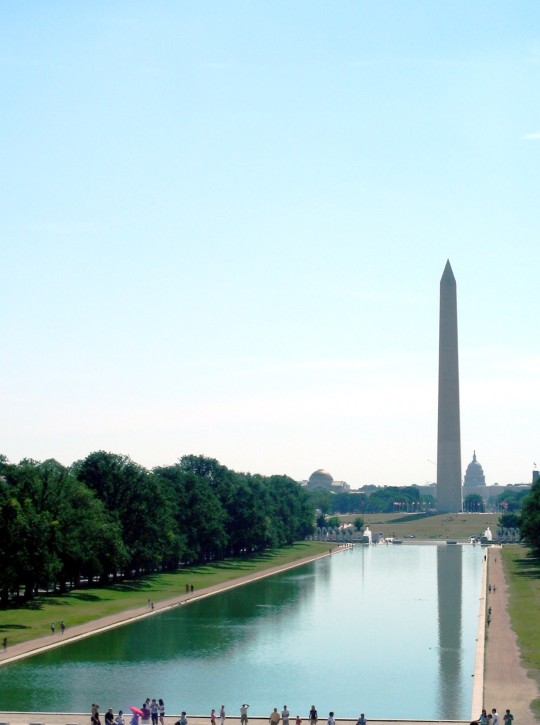

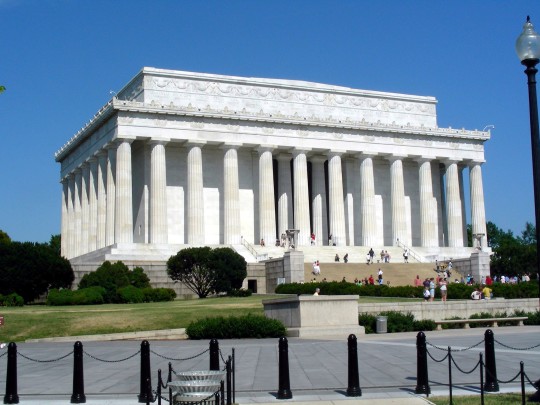









British troops invaded Washington, D.C. and during the Burning of Washington the White House, the Capitol and many other buildings are set ablaze on August 24, 1814.
#Fort York Squad#Fort York Guard Royal Artillery#British troops#invaded#Washington DC#Burning of Washington#24 August 1814#anniversary#US history#British History#Toronto#Ontario#summer 2018#2009#architecture#tourist attraction#vacation#travel#original photography#cityscape#Canada#White House#US Capitol#War of 1812#Fort York National Historic Site#landmark#smithsonian#Lincoln Memorial#Washington Monument#National Mall
2 notes
·
View notes
Text
~ William Alexander ~
We have a belated #harbordefensehappybirthday to celebrate!
Today, we honor Continental (U.S.) Army Major General William Alexander, Lord Stirling who was born (most likely) on (Wed) December 4th, 1726 in New York City.
By all accounts, he was quite intelligent and well educated. He was the son of Scottish immigrants who fled Scotland after the Jacobite Rebellion. There was ancestral royal blood in the family, and he sought and held a highly controversial title of Lord Stirling. He lived a life befitting the title - and racked up the bill to go with it. Living in New Jersey and deeply in debt by the time the Revolutionary War broke out, the conflict provided a timely interruption to offload his monetary problems.
He became a Colonel in the New Jersey Militia, using his personal funds to outfit the 1st NJ Regiment; he was promoted to Brigadier General in March, 1776.
At the Battle of Long Island in August, the Patriots were quickly outflanked by the Redcoats. Seeing the disaster unfold, Stirling organized troops from Maryland into a well-executed, collapsing rear-guard action that allowed the majority of the American Army to escape. Scattering his men at the very end, he himself remained to be captured. The action was so successful, even the British acknowledged his gallantry.
Released in a prisoner exchange, Stirling was decisively engaged at Trenton that December. He was defeated at Short Hills, NJ in June of 1777, but won at Brandywine and Germantown, both in Pennsylvania. That winter, by accident, he was able to expose, and stop, a planned coup by General Horatio Gates to take command from George Washington. He’s forever part of New Jersey’s legacy for his part in the Battle of Monmouth Courthouse on June 28th, 1778. The fight was savage and he took heavy casualties, but his troops held their ground.
By 1781, Stirling was assigned to command the forces in the northern frontier as the Continentals moved south to Yorktown. With the war all but over, Stirling, in poor health, died on active duty on January 15th, 1783, age 56. He was buried in famed Trinity Church in New York City.
However, his legacy of service would not be allowed to end there. With War Department General Order No. 194 on December 27th, 1904, he became the namesake to “Battery Alexander,” a two-gun 12-inch caliber disappearing battery at Fort Hancock, NJ. Construction began in 1898, and it was accelerated for the outbreak of the Spanish American War. Completion and transfer to the Coast Artillery was in July, 1899.
Battery Alexander is unique, as it is the two northern emplacements of what is called “9-Gun Battery” at Ft. Hancock. A total of six 12-inch guns and three 10-inch guns were emplaced there between 1896 and 1902. Battery Alexander’s guns face due north, and cover the west into Sandy Hook and Raritan Bay, as well as the approaches to the harbor from the southeast. The Battery enjoyed an exceptionally long service life of 43 years. The guns were finally salvaged for a scrap drive in early 1943. During the Cold War, the vacant emplacement was used as ammunition storage for 90-mm Anti-Aircraft guns until the Nike missiles came online in 1954.
Today, the Battery is in poor shape, with trees and vegetation growing through the concrete. The National Park Service has classified Battery Alexander as a “ruin,” meaning it will never, ever be restored or even preserved.
Although the emplacement may be vanishing, the incredible legacy of General William Alexander, Lord Stirling, the Battery that carries his name, and the service of the US Army Coast Artillerymen that manned it across four decades is in the safest of hands, here.
🇺🇸 🇺🇸 🇺🇸 🇺🇸 🇺🇸
🇺🇲🇺🇲 ** Please Like & Follow "Sandy Hook History" on Facebook & Instagram for more amazing maritime and military histories of the Garden State and New York Harbor as well as a review of the 80th Anniversary of the Battle Of The Atlantic and World War 2** 🇺🇲🇺🇲
#visitmonmouth #newjerseybuzz #thejournalnj #locallivingnj #journeythroughjersey #centraljerseyexists #discovernj #yesnj #newjerseyhistory #newjerseyforyou #sandyhookbeach #sandyhooknj #sandyhookhistory #forthancockhistory #forthancock #williamalexander #williamalexanderlordstirling #revolutionarywar #majorgeneral #continentalarmy #battleofmonmouth #monmouthcountyhistory #newjerseyhistory #namesake #whatsinaname #12inch #americanrevolution #scottishlord #americanrevolutionarywar
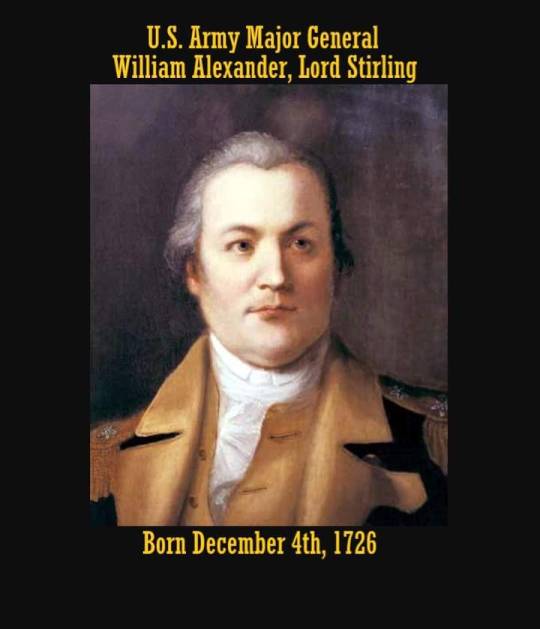



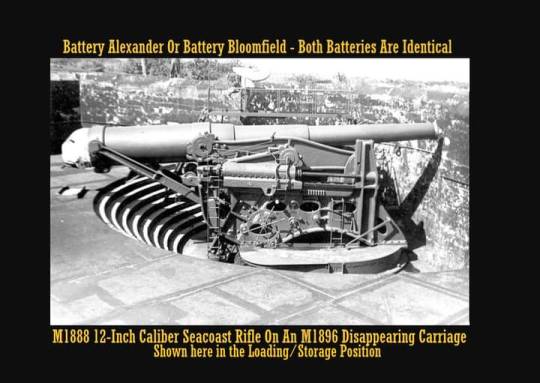
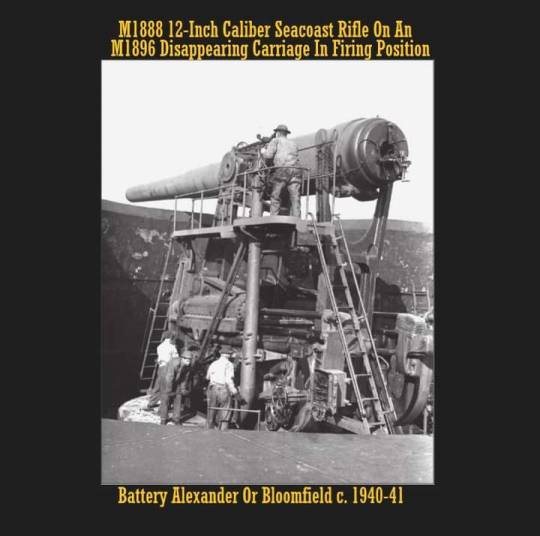


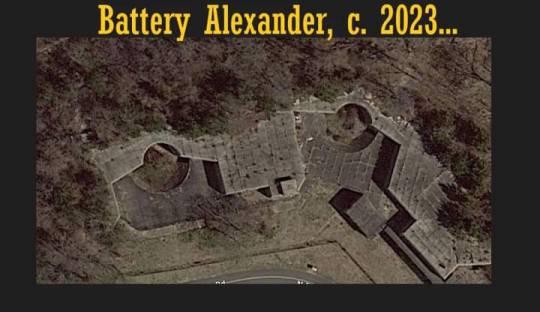
#sandyhookhistory#forthancock#williamalexander#american revolution#centraljerseyexists#journeythroughjersey#locallivingnj#newjerseyhistory#sandyhooknj#monmouthcountyhistory#sandyhookbeach#newjerseybuzz#discovernj
1 note
·
View note
Photo
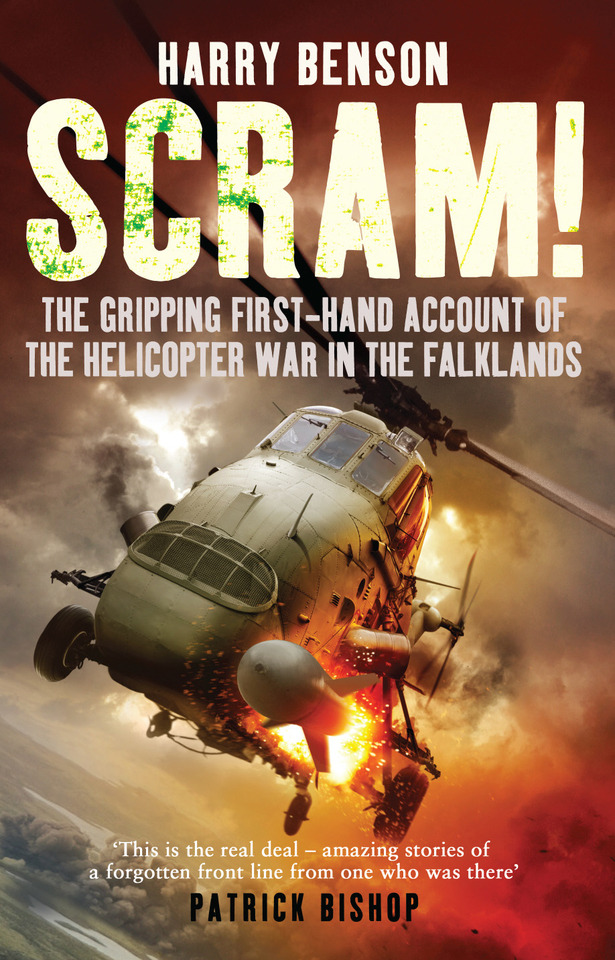
Title: Scram!
Authors: Harry Benson
ISBN: 9781409051978
Tags: A-4 Skyhawk, Airborne, Ajax Bay (Falklands), ARA General Belgrano, ARA Guerrico (P-32), ARA Santa Fe, Argentina, Argentine Air Force, Argentine Army, Argentine Naval Aviation, Argentine Navy, Artillery, Ascension Island, Aviation, Avro Vulcan, B.125 Bulldog, Battle of Goat Ridge (Falklands), Battle of Goose Green (Falklands), Battle of Mount Harrier (Falklands), Battle of Mount Longdon (Falklands), Battle of Mount Tumbledown (Falklands), Battle of Mount William (Falklands), Battle of Pebble Island (Falklands), Battle of Two Sisters (Falklands), Battle of Wireless Ridge (Falklands), Blue Beach (Falklands), Britannia Royal Naval College Dartmouth, CASEVAC, CH-47 Chinook, Darwin (Falklands), DHC-1 Chipmunk, Estancia House (Falklands), Falklands War (1982), Fitzroy (Falklands), Fortuna Glacier (Falklands), FS Drummond-class Corvette, Green Beach (Falklands), Gurkha, H-3 Sea King, H-34 Choctaw, Harrier, Helicopter, HRH Prince Andrew - Duke of York, IA 58 Pucara, IAI Dagger, Junglies (UK RN FAA), Lieutenant Alfredo Astiz (ARA), Medevac helicopter, Mirage III, Mount Kent (Falklands), Operation Black Buck (Falklands War), Operation Corporate (Falklands War), Operation Paraquet/Paraquat (Falklands War), Operation Sutton (Falklands War), Port San Carlos (Falklands), Port Stanley (Falklands), Port Stanley Airport (Falklands), Rapier SAM, Red Beach (Falklands), SA.342 Gazelle, San Carlos Bay (Falklands), Sea Harrier, South Georgia (Falklands), South Thule (Falklands), SpecOps, Submarine, Super Etendard, Sussex Mountains (Falklands), UK 2 Para, UK 22 SAS, UK 29 Commando Royal Artillery, UK 3 Commando Brigade, UK 3 Para, UK 5 Infantry Brigade, UK 7th Duke of Edinburgh's Own Gurkha Rifles, UK AAC 656 Sqd, UK British Army, UK British Army Air Corps, UK Commando Helicopter Squadron (UK RN FAA), UK HMS Antrim (D18), UK HMS Ardent (F184), UK HMS Arrow (F173), UK HMS Broadsword (F88), UK HMS Conqueror (S48), UK HMS Coventry (D118), UK HMS Endurance, UK HMS Fearless (L10), UK HMS Glamorgan(D19), UK HMS Hermes (R12), UK HMS Intrepid (L11), UK HMS Invincible (R05), UK HMS Plymouth (F126), UK HMS Sheffield (D80), UK MV Norland, UK MV Queen Elizabeth II, UK Paras, UK Prime Minister Margaret Thatcher, UK RAF No 101 Sqd, UK RAF No 18 Sqd, UK RAF No 44 Sqd, UK RAF No 50 Sqd, UK RFA Engadine (K08), UK RFA Fort Austin (A386), UK RFA Green Rover (A268), UK RFA Olna (A123), UK RFA Regent (A486), UK RFA Resource (A480), UK RFA Sir Galahad (L3005}, UK RFA Sir Lancelot (L3029), UK RFA Tidepool (A76), UK RFA Tidespring (A75), UK RM 3 CDO Brigade Air Sqd, UK RM 40 Commando, UK RM 42 Commando, UK RM 45 Commando, UK RM Naval Party 8901, UK RN Centaur-class Aircraft Carrier, UK RN Churchill-Class Nuclear Submarine, UK RN County-Class Destroyer, UK RN FAA 737 Naval Air Sqd, UK RN FAA 800 Naval Air Sqd, UK RN FAA 801 Naval Air Sqd, UK RN FAA 820 Naval Air Sqd, UK RN FAA 825 Naval Air Sqd, UK RN FAA 829 Naval Air Sqd, UK RN FAA 845 Naval Air Sqd (Commando), UK RN FAA 846 Naval Air Sqd (Commando), UK RN FAA 847 Naval Air Sqd (Commando), UK RN FAA 848 Naval Air Sqd (Commando), UK RN Fearless-Class LPD, UK RN Invincible-class Aircraft Carrier, UK RN Rothesay-Class Frigate, UK RN Type 21 Frigate, UK RN Type 22 Frigate, UK RN Type 42 Guided Missile Destroyer, UK RNAS Merryfield Airfield, UK RNAS Predannack Airfield, UK RNAS Yeovilton, UK Royal Air Force (RAF), UK Royal Fleet Auxiliary (RFA), UK Royal Marines, UK Royal Navy, UK Royal Navy Fleet Air Arm (RN FAA), UK Scots Guards, UK Sgt Ian MacKay (3 Para), UK Sir Rex Masterman Hunt, UK Special Air Service (SAS), UK Special Boat Squadron (SBS), UK SS Atlantic Causeway, UK SS Atlantic Conveyor, UK SS Canberra, UK SS Uganda, UK Welsh Guards, USS Catfish (SS-339), Victoria Cross, Westland AH.1 Scout, Westland Lynx, Westland Wessex, Wideawake Airfield (Ascension Island)
Subject: Books.Military.20th-21st Century.Americas.Falklands War
Description:
'Scram! Scram! was all I heard though my coms as I caught sight of two Argentine A-4 Skyhawks blasting through bomb alley toward the anchored British flotilla. In front of me every ship opened up with everything they had as missiles and tracer streaked though the sky to meet the incoming aircraft. All we could do as helicopter pilots caught out in the open was head for the hills. Literally.'
Soon after the Argentine army invaded the Falklands in the early hours of 2 April 1982, it was the Royal Navy commando helicopter pilots, nicknamed junglies, who flew most of the land-based missions in the Falklands in their Sea King and Wessex helicopters. Facing both mortar fire and head-on attacks by Argentine jets, they inserted SAS patrols at night, rescued survivors of Exocet attacks, mounted daring missile raids, as well as supporting the British troops and evacuating casualties, often in appalling weather conditions.
Harry Benson was a twenty-one-year-old junglie Wessex pilot, fresh out of training, when war started. He has interviewed over forty of his former colleagues for this book creating a fast-paced, meticulously researched and compelling account written by someone who was there, in the cockpit of a Wessex helicopter.
Scram!
The thrilling untold story of the young helicopter pilots and aircrew who risked their lives during the brief but ferocious Falklands War.
'Scram', broadcast over the helicopter control radio net during the Falklands War thirty years ago in 1982 meant 'take cover from Argentine fighters'. This call was a regular feature of life down south, especially during the first six days after we landed while the Royal Navy fought and won the Battle of San Carlos Water; arguably the toughest fight by British ships against enemy air since Crete in 1941.
As the Argentine fighter/bombers came barrelling in I would watch heart in mouth as the junglies headed for folds in the ground, remaining burning and turning until the enemy had left.
We went south with far too few helicopters initially. Those we had were flown every hour they could be; often with bullet holes in fuselages, red warning lights on in cockpits. One of the three BAS Scout helicopters had a bullet hole in the tail section patched with the lid from a Kiwi boot polish tin. Today's health and safety nerds would have had an apoplectic fit.
In April 1982 Harry Benson was a 21-year-old Royal Navy commando helicopter pilot, fresh out of training and one of the youngest helicopter pilots to serve in the Falklands War. These pilots, nicknamed 'junglies', flew most of the land-based missions in the Falklands in their Sea King and Wessex helicopters. Much of what happened in the war - the politics, task force ships, Sea Harriers, landings, Paras and Marines - is well-known and documented. But almost nothing is known of the young commando helicopter pilots and aircrewmen who made it all happen on land and sea. This is their 'Boys Own' story, told for the very first time.
Harry Benson has interviewed forty of his former colleagues for the book creating a tale of skill, initiative, resourcefulness, humour, luck, and adventure. This is a fast-paced, meticulously researched and compelling account written by someone who was there, in the cockpit of a Wessex helicopter.
#book#books#ebooks#ebook#booklr#bookblr#history#nonfiction#military#war#falklan#malvinas#Royal Navy#Royal Navy Commandos#helicopter#aviation#falklands
4 notes
·
View notes
Text
D-Day: Canada’s three services on Operation Overlord
By Chris Charland
The coming storm
In February 1943, United States President Franklin D. Roosevelt and British Prime Minister Winston Churchill, along with their respective advisors, held a high-level conference in Casablanca, Morocco. They were there to discuss the future conduct of the war.
They decided that plans for the re-entry in to Europe must be given top priority and the concentration of forces and materials needed for the forthcoming invasion began.
In March 1943, United States Army General Dwight D. Eisenhower selected the British Army’s acting Lieutenant-General Frederick Morgan as chief of staff to the supreme allied commander of the allied force that would invade northern Europe. Morgan is credited as being the original planner for the invasion of Europe.
Lingering concerns and differences of opinion on Operation Neptune, the assault phase of Operation Overlord, were addressed at the Quebec Conference in August 1943. It was agreed that the invasion of France would take place in May 1944.
On November 28, 1943, General Eisenhower, affectionately known as “Ike”, was appointed the supreme allied commander. His duty was no less than to enter the continent of Europe in conjunction with all other allied nations, undertake operations aimed at the heart of Germany and destroy its forces. Taking into consideration a nearly full moon and the Normandy tides, June 5, 1944, was set as the day for an invasion on a scale that had never before been attempted.
The entire daring escapade was a monumental logistics nightmare. In all, more than 7,000 vessels carrying more than 150,000 troops would have to cross the English Channel to France undetected and arrive exactly on time to establish a beachhead. Once the details of invasion were coordinated, the land forces, under Field Marshal Sir Bernard L. “Monty” Montgomery, put forth the logistical requirements. All allied air operations would be under the command of the Royal Air Force’s Air Chief Marshal Sir Trafford Leigh-Mallory
The build-up also had to provide for the debarkation of reinforcements without interruption for five to six weeks after the landing . . . any delay would carry heavy consequences.
The initial landing was delayed by 24 hours to June 6 due to stormy weather, which also indirectly caused the sinking of the minesweeper USS Osprey. Additionally, an American tank landing craft, United States LCT2498, broke down and subsequently capsized and sank in the vicious swell.
Mother Nature, not the Germans dealt the first blows against Operation Overlord. Nevertheless, D-Day and the Allied forces arrived at the beaches of Normandy with full force on the morning of June 6.
Canadian Red Devils arrive
The crack 1st Canadian Parachute Battalion led by Lieutenant-Colonel G.F.P. Bradbrooke was part of the tough and tumble 3rd Brigade of the British 6th Airborne Division whose members were nicknamed “Red Devils”. The Canadian Red Devils dropped into France after 1 a.m. on June 6, an hour before the arrival of the rest of the brigade, with the aim of securing the DZ (Drop Zone), capturing the enemy headquarters located at the site and destroying the local radio station at Varaville. They were the first Canadian unit to arrive in France.
After that, the Canadians were to destroy vehicle bridges over the Dives River and its tributaries at Varaville. Having done that, they were to neutralize various fortified positions at the crossroads. Additional responsibilities included protecting the left (southern) flank of the 9th Battalion as the battalion assaulted the enemy gun battery at Merville. Upon completing that, the Canadians were to hold a strategically important position at the Le Mesnil crossroads.
Remarkably, the Canadian paratroopers had accomplished all they set out to do by mid-day on June 6.
3rd Division’s Normandy adventure
The Canadian Army’s 3rd Canadian Division, led Major General R.F. “Rod” Keller, along with the 2nd Canadian Armoured Brigade under the command of Brigadier R.A. Wyman, formed part of General Miles Dempsey’s 2nd British Army.
The Canadians, numbering just over 14,000, came ashore at Juno Beach. The five-mile wide Juno Beach was divided into two primary sectors, Mike and Nan. In turn, each of these was sub-divided into smaller sections denoted by the sector name followed by a colour. Many heroic deeds were performed on the first day at Juno Beach. The Allies had come to expect nothing less. The relentless pursuit of the Canadian Army’s objectives was measured in human currency; of the 14,000 Canadians who stormed Juno Beach, 340 were killed, 574 were wounded and 49 were captured by the defending Germans.
This was a small comfort, considering planners had predicted a much higher casualty rate.
The 3rd Canadian Infantry Division* comprised the following units:
7th Canadian Infantry Brigade
Royal Winnipeg Rifles
Regina Rifle Regiment
Canadian Scottish Regiment
8th Canadian Infantry Brigade
Queen's Own Rifles of Canada
Le Régiment de la Chaudière
North Shore (New Brunswick) Regiment
9th Infantry Brigade
HIghland Light Infantry of Canada
Stormont, Dundas, and Glengarry Highlanders
Nova Scotia Highlanders
Cameron Highlanders of Ottawa (M.G.)
7th Reconnaissance Regiment
17th Duke of York's Royal Canadian Hussars
Divisional Royal Canadian Artillery
12th Field Regiment, Royal Canadian Artillery
13th Field Regiment, Royal Canadian Artillery
14th Field Regiment, Royal Canadian Artillery
19th Army Field Regiment, Royal Canadian Artillery
3rd Anti-Tank Regiment, Royal Canadian Artillery
4th Light Anti-Aircraft Regiment, Royal Canadian Artillery
Divisional Royal Canadian Engineers
5th Field Company, Royal Canadian Engineers
6th Field Company, Royal Canadian Engineers
16th Field Company, Royal Canadian Engineers
18th Field Company, Royal Canadian Engineers
3rd Canadian Field Park Company, Royal Canadian Engineers
3rd Canadian Divisional Bridge Platoon, Royal Canadian Engineers
Royal Canadian Corps of Signals
3rd Infantry Divisional Signals
Royal Canadian Army Service Corps
3rd Infantry Divisional Troops Company
Royal Canadian Army Medical Corps
14 Field Ambulance
22 Field Ambulance
23 Field Ambulance
2nd Canadian Armoured Brigade
6th Canadian Armoured Regiment (1st Hussars)
10th Canadian Armoured Regiment (Fort Garry Horse)
27th Armoured Regiment (Sherbrooke Fusiliers)
* Units of the Royal Canadian Electrical and Mechanical Engineers and the Royal Canadian Ordnance Corps also provided vital support during the landings.
British units that supported the Canadian landing on Juno Beach
48 Royal Marine Commando
4th Special Service Brigade
26th Assault Squadron
80th Assault Squadron
5th Assault Regiment, Royal Engineers
6th Assault Regiment, Royal Engineers
Two detachments of the 22nd Dragoons, 79th Armoured Division
3rd Battery 2nd Royal Marine Armoured Support Regiment
4th Battery, 2nd Royal Marine Armoured Support Regiment
“C” Squadron, Inns of Court Regiment
“Ready Aye Ready”
The Royal Canadian Navy was extremely active before and during the first day of Operation Overlord.
A force of 19 corvettes was assigned to provide escort service to the many ships and floating docks heading for assembly points on the south coast of England Eleven frigates, nine destroyers and five corvettes were seconded to the Royal Navy to provide an ASDIC (anti-submarine detection investigation committee) screen around the western approaches to the English Channel one week before the invasion date. This was to guard against the constant German U-Boat threat.
Only hours before the invasion, Canadian “Bangor” Class minesweepers cleared shipping lanes of mines and then ensured that the anchorage swept clear. The last part of their assignment was to sweep the lanes for the assault boats, right to the limit of the deep water. While under a moonlit sky, they crept within a mile and a half (2.4 kilometres) of shore, pretty well under the noses of the unsuspecting Germans.
Fortunately, they were not spotted; German coastal artillery guns would have made mincemeat of them.
The RCN’s two landing ships, HMCS Prince Henry and HMCS Prince David, carried 14 landing craft (LCI or landing craft, infantry) to a point where they could be launched for the run into the beachhead. In the British sector, 30 “Fleet” class destroyers, including HMCS Algonquin and HMCS Sioux, provided direct fire support for the landing craft carrying part of the 3rd Canadian Infantry Division after they were launched from the landing ships.
Mines and other underwater obstructions were a constant threat to the landing craft and few escaped without some sort of damage. Leading the second wave were 26 landing craft of the RCN’s 260th, 262nd and 264th Flotillas. These flotillas were carrying a combined force of 4,617 soldiers, primarily from the 3rd Canadian Infantry Division. Six speedy and deadly MTBs (motor torpedo boat) were assigned to patrol the Seine estuary. RCN corvettes would go on to escort additional convoys into Baie de la Seine during the rest of the day. Naval losses were described as “incredibly light”, especially considering how many enemy long-range naval guns and other weapons were still operational at the time of the landings.
The following RCN vessels took part in the invasion of Normandy:
Tribal class destroyer
HMCS Haida
HMCS Huron
V class destroyer
HMCS Algonquin
HMCS Sioux
River class destroyer (British)
HMCS Gatineau
HMCS Kootenay
HMCS Qu’Appelle
HMCS Ottawa (II)
HMCS Chaudière
HMCS Restigouche
HMCS Skeena
HMCS St. Laurent
Mackenzie Class Destroyer Escort
HMCS Saskatchewan
River class frigate
HMCS Meon
HMCS Teme
River class frigate (1942-1943 program)
HMCS Cape Breton
HMCS Grou
HMCS Matane
HMCS Outremont
HMCS Port Colberne
HMCS Saint John
HMCS Swansea
HMCS Waskesiu
Flower class corvette (1939-1940)
HMCS Alberni
HMCS Baddeck
HMCS Camrose
HMCS Drumheller
HMCS Louisburg (II)
HMCS Lunenburg
HMCS Mayflower
HMCS Moose Jaw
HMCS Summerside
HMCS Prescott
Revised Flower class corvette
HMCS Mimico
Revised Flower class corvette (1940-1941 program)
HMCS Calgary
HMCS Kitchener
HMCS Port Arthur
HMCS Regina
HMCS Woodstock
Revised Flower class corvette (1942-1943 program)
HMCS Lindsay
Troop landing ship
HMCS Prince David
HMCS Prince Henry
Bangor class minesweeper
HMCS Bayfield
HMCS Guysborough
Bangor class minesweeper (1940-1941 regular program)
HMCS Vegreville
Bangor class minesweeper (1941-1942 program)
HMCS Kenora
HMCS Mulgrave
29th Motor Torpedo Boat (MTB) Flotilla
MTBs 459, 460, 461, 462, 463, 464, 465 and 466
65th Motor Torpedo Boat (MTB) Flotilla
MTBs 726, 727, 735, 736, 743, 744, 745, 747, 748
260th Landing Craft Infantry (Large) Flotilla
LCI(L)s 117, 121, 166, 177, 249, 266, 271, 277, 285, 298 and 301
262nd Landing Craft, Infantry (Large) Flotilla
LCI(L)s 115, 118, 125, 135, 250, 252, 262, 263, 270, 276, 299 and 306
264th Landing Craft, Infantry (Large) Flotilla
LCI(L)s 255, 288, 295, 302, 305, 310 and 311
528th Landing Craft, Assault (LCA) Flotilla
LCAs 736, 850, 856, 925, 1021, 1033, 1371 and 1372
529th Landing Craft, Assault (LCA) Flotilla
LCAs 1957, 1059, 1137, 1138, 1150, 1151, 1374 and 1375
Per Ardua Ad Astra
It was a maximum effort for the crews of Bomber Command’s 6 (RCAF) Group on the night of June 5-6, 1944. A force of 190 aircraft, comprising Avro Lancaster and Handley Page Halifax four-engine heavy bombers, flew 230 sorties in support of pre-invasion operations. A large number of targets were struck, with particular attention paid to the German coastal artillery emplacements on the beachhead. In all, more than 870 tons of high explosives were dropped for the loss of one Canadian Halifax.
RCAF fighter and fighter-bomber squadrons went into action providing support to the Canadian ground forces as the invasion kicked into high gear. The aerial activity over Normandy resembled swarms of locusts—the planes seemed to keep coming with no end in sight. An estimated 1,000 aircraft from 39 of the 42 Royal Canadian Air Force squadrons stationed overseas took on the aerial support of the invasion with roles ranging bombing, air superiority, ground attack and photo reconnaissance.
The following Royal Canadian Air Force squadrons were involved in pre-invasion activities and in support of the actual invasion.
For more information about the squadrons involved in D-Day, their aircraft and their roles, visit “Who was in the air on D-Day?”
SECOND TACTICAL AIR FORCE
No. 83 Group
39 (RCAF) Reconnaissance Wing
400 “City of Toronto” (Fighter Reconnaissance) Squadron
414 “Sarnia Imperials” (Fighter Reconnaissance) Squadron
430 “City of Sudbury” (Fighter Reconnaissance) Squadron
126 (RCAF) Fighter Wing
401 “Ram” (Fighter) Squadron
411 “Grizzly Bear” (Fighter) Squadron
412 “Falcon” (Fighter) Squadron
127 (RCAF) Fighter Wing
403 “Wolf” (Fighter) Squadron
416 “Lynx” (Fighter) Squadron
421 “Red Indian” (Fighter) Squadron
143 (RCAF) Fighter Wing
438 “Wild Cat” (Fighter-Bomber) Squadron
439 “Westmount” (Fighter-Bomber) Squadron
440 “City of Ottawa” (Fighter-Bomber) Squadron
144 (RCAF) Fighter Wing
441 “Silver Fox” (Fighter) Squadron
442 “Caribou” (Fighter) Squadron
443 “Hornet” (Fighter) Squadron
No. 85 Group
142 (Night Fighter) Wing
402 “City of Winnipeg” (Fighter) Squadron
148 (Night Fighter) Wing (RAF)
409 “Nighthawk” (Night Fighter) Squadron
149 (Night Fighter) Wing (RAF)
410 “Cougar” (Night Fighter) Squadron
AIR DEFENCE OF GREAT BRITAIN
10 Group
406 “Lynx” (Night Fighter) Squadron
11 Group
418 “City of Edmonton” (Intruder) Squadron
ALLIED STRATEGIC AIR FORCE
RAF Bomber Command / 6 (RCAF) Group
408 “Goose” (Bomber) Squadron
419 “Moose” (Bomber) Squadron
420 “Snowy Owl” (Bomber) Squadron
424 “Tiger” (Bomber) Squadron
425 “Alouette” (Bomber) Squadron
426 “Thunderbird” (Bomber) Squadron
427 “Lion” (Bomber) Squadron
428 “Ghost” (Bomber) Squadron
429 “Bison” (Bomber) Squadron
431 “Iroquois” (Bomber) Squadron
432 “Leaside” (Bomber) Squadron
433 “Porcupine” (Bomber) Squadron
434 “Bluenose” (Bomber) Squadron
RAF Bomber Command / 8 (Pathfinder) Group
405 “Vancouver” (Bomber) Squadron
RAF Coastal Command / 15 (General Reconnaissance) Group
422 “Flying Yachtsman” (General Reconnaissance) Squadron
423 (General Reconnaissance) Squadron
RAF Coastal Command / 16 Group
415 “Swordfish” (Torpedo Bomber) Squadron
RAF Coastal Command / 19 (General Reconnaissance) Group
404 “Buffalo” (Coastal Fighter) Squadron
407 “Demon” (General Reconnaissance) Squadron
Conclusion
All in all, Canadian combatants from all three services gave an outstanding account of themselves on the first day of the battle. They would continue to distinguish themselves by dogged determination and selfless acts of heroism, helping write the final chapter and finally closing the book on the Third Reich’s so-called one thousand-year reign.
0 notes
Text
St. Sever Cemetery Extension is situated about 3 kilometres south of Rouen Cathedral and a short distance west of the road from Rouen to Elbeuf. Coming from Elbeuf/Caen on the N.138 follow Avenue Des Canadiens right down to the roundabout. Take the fourth exit into Boulevard Stanislas Girardin, and the cemetery lies 150 metres on the left. If coming from station Rive Gauche, Gare St Sever, follow Quai D’Elbeuf, Quai Jean Moulin, Quai Cavelier De La Salle into Avenue Jean Rondeaux, Av. De La Liberation, Bd. Du 11 Novembre to the roundabout. Take the first exit into Boulevard Stanislas Girardin, the cemetery lies 150 metres on the left. St Sever is part of Le Petit Quevilly. The first CWGC signpost is just when you get to the entrance of the cemetery.
St Sever Cemetery Extension, Rouen
St Sever Cemetery Extension, Rouen
St Sever Cemetery Extension, Rouen
St Sever Cemetery Extension, Rouen
St Sever Cemetery Extension, Rouen
St Sever Cemetery Extension, Rouen
St Sever Cemetery Extension, Rouen
St Sever Cemetery Extension, Rouen
During the First World War, Commonwealth camps and hospitals were stationed on the southern outskirts of Rouen. A base supply depot and the 3rd Echelon of General Headquarters were also established in the city. Almost all of the hospitals at Rouen remained there for practically the whole of the war. They included eight general, five stationary, one British Red Cross and one labour hospital, and No. 2 Convalescent Depot. A number of the dead from these hospitals were buried in other cemeteries, but the great majority were taken to the city cemetery of St. Sever. In September 1916, it was found necessary to begin an extension, where the last burial took place in April 1920. During the Second World War, Rouen was again a hospital centre and the extension was used once more for the burial of Commonwealth servicemen, many of whom died as prisoners of war during the German occupation. The cemetery extension contains 8,345 Commonwealth burials of the First World War (ten of them unidentified) and 328 from the Second World War (18 of them unidentified).
St Sever Cemetery Extension: Rev Theodore Hardy VC
St Sever Cemetery Extension: Rev Theodore Hardy VC
The extension was designed by Sir Reginald Blomfield.
Number of burials by Unit
Australian Forces
782
Royal Field Artillery
440
Royal Engineers
322
Royal Garrison Artillery
298
Canadian Forces
296
Royal Fusiliers (City of London Regt.)
287
Indian Forces
270
Machine Gun Corps (Inf.)
249
Army Service Corps
208
Manchester Regt.
134
New Zealand Forces
132
Durham Light Inf.
125
King’s Royal Rifle Corps
120
Sherwood Foresters (Notts. & Derbys. Regt.)
113
West Yorkshire Regt.
106
King’s Liverpool Regt.
102
Royal Warwickshire Regt.
101
Lancashire Fusiliers
98
Gloucestershire Regt.
94
North Staffordshire Regt.
93
Cheshire Regt.
91
British West Indies Regt.
88
Royal Army Medical Corps
87
Rifle Brigade
85
South African Forces
85
Middlesex Regt.
84
Northamptonshire Regt.
83
Worcestershire Regt.
83
Northumberland Fusiliers
80
Royal Naval Division
79
King’s Own Yorkshire Light Inf.
74
Royal Berkshire Regt
73
Duke of Wellingtons (West Rding Regt)
72
Royal Welsh Fusiliers
69
Lincolnshire Regt
63
Essex Regt
62
Yorkshire Regt (Green Howards)
62
Welsh Regt
58
Devonshire Regt
57
Royal Sussex Regt
57
Royal Scots (Lothian Regt)
56
Royal Flying Corps/RAF
55
Gordon Highlanders
54
Loyal North Lancashire Regt
53
South Staffordshire Regt
53
York & Lancaster Regt
53
Argyll & Sutherland Highlanders
52
Queens (Royal West Surrey Regt)
51
Black Watch (Royal Highlanders)
50
Grenadier Guards
47
Ox & Bucks Light Inf
47
Bedfordshire Regt
46
Leicestershire Regt
45
Royal West Kent Regt (Queens Own)
45
Border Regt
44
Chinese Labour Corps
44
Kings Shropshire Light Inf
44
Royal Horse Artillery
44
Cameronians (Sco Rifles)
43
East Lancashire Regt
43
Highland Light Inf
43
South Wales Borderers
43
Suffolk Regt
42
King’s Own Scottish Borderers
41
Cameron Highlanders
40
Royal Army Service Corps
40
Royal Dublin Fusiliers
40
Buffs (East Kent Regt)
38
East Surrey Regt
38
Hampshire Regt
38
Somerset Light Inf
38
Norfolk Regt
37
Dorsetshire Regt
36
19th Bn London Regt (St Pancras)
35
Kings Own Royal Lancaster Regt
35
Seaforth Highlanders
35
South Lancashire Regt
35
8th Bn London Regt (P.O. Rifles)
33
East Yorkshire Regt
33
Duke of Cornwalls Light Inf
32
Royal Irish Rifles
29
Coldstream Guards
26
Royal Inniskilling Fusiliers
26
Wiltshire Regt
26
7th Bn London Regt
22
Scots Guards
22
Royal Scots Fusiliers
20
Tank Corps
20
1st Bn London Regt (Royal Fusiliers)
19
Irish Guards
19
Labour Corps
16
Monmouthshire Regt
16
Hertfordshire Regt
15
Royal Irish Regt
14
Royal Munster Fusiliers
14
6th Bn London Regt (City of London Rifles)
13
Army Vetinary Corps
13
12th Bn London Regt (The Rangers)
12
4th Bn London Regt (Royal Fusiliers)
12
Royal Army Ordnance Corps
12
Cambridgeshire Regt
11
Royal Irish Fusiliers
11
Royal Newfoundland Regt
11
15th Bn London Regt (PWO Civil Service Rifles)
9
18th Bn London Regt (London irish Rifles)
9
21st Bn London Regt (1st Surrey Rifles)
9
2nd Bn London Regt (Royal Fusiliers)
9
Army Cyclist Corps
9
Guards Machine Gun Regt
9
Military Police Corps
9
Welsh Guards
9
12th (POW Royal) Lancers
8
14th Bn London Regt (London Scottish)
8
20th Bn London Regt (Blackheath & Woolwich)
8
2nd (Queens Bays) Dragoon Guards
8
7th (Princess Royals) Dragoon Guards
8
9th Bn London Regt (Queen Victorias Rifles)
8
Connaught Rangers
8
Lord Strathcona’s Horse (Canada)
8
13th Bn London Regt (Kensington)
7
3rd Bn London Regt (Royal Fusiliers)
7
4th (Queens Own) Hussars
7
5th (Princess Charlotte of Wales’s) Dragoon Guards
7
6th (Caribiniers) Dragoon Guards
7
Honourable Artillery Coy
7
Leinster Regt
7
Queens Own Oxfordshire Hussars
7
10th Bn London Regt (Hackney)
6
16th Bn London Regt (Queens Westminster Rfiels)
6
22nd Bn London Regt (Queens)
6
24th Bn London Regt (Queens)
6
19th (Queen Alexandras Own Royal Hussars
5
20th Hussars
5
2nd (Royal Scots Greys) Dragoons
5
Chaplain to the Forces
5
Fort Garry Horse
5
Machine Gun Corps (Cav)
5
Mercantile Marine
5
17th Bn London Regt (Poplar & Stepney Rifles)
4
5th Bn London Regt (London Rifle Brigade)
4
8th (Kings Royal Irish) Hussars
4
9th (Queens Royal ) Lancers
4
British Red Cross Society
4
Herefordshire Regt
4
Queen Mary Army Auxilliary Corps
4
11th (Prince Alberts Own ) Hussars
3
15th (The Kings) Hussars
3
16th (The Queens) Lancers
3
18th (Queen Mary’s Own) Hussars
3
2/4th Bn London Regt (Royal Fusiliers)
3
6th (Inniskilling) Dragoons
3
Kings Edwards Horse
3
North Irish Horse
3
Royal Guernsey Light Inf
3
17th (Duke of Cambridge’s Own) Lancers
2
1st Life Guards
2
2/12th Bn London Regt (The Rangers)
2
2/8th Bn London Regt (P.O. Rifles)
2
28th Bn London Regt (Artists Rifles)
2
2nd Life Guards
2
4th (Royal Irish) Dragoon Guards
2
Lothian & Border Horse
2
Royal Horse Guards
2
Royal Naval Volunteer Reserve
2
Voluntary Aid Detachement
2
10th (POW Own Royal) Hussars
1
11th Bn London Regt (Finsbury Rifles)
1
2/14th Bn London Regt (London Scottish)
1
2/1st Bn London Regt (Royal Fusiliers)
1
2/5th Bn London Regt (London Rifle Brigade)
1
2/6th Bn London Regt (City of London Rifles)
1
21st (Empress of India’s) Lancers
1
23rd Bn London Regt
1
25th Bn London Regt (Cyclist Btn)
1
29th Bn London Regt
1
30th Bn London Regt
1
3rd (King’s Own) Hussars
1
5th (Royal Irish) Lancers
1
Bedfordshire Yeomanry
1
Civilian
1
Egyptian Labour Corps
1
General List
1
Household Btn
1
Leicestershire Yeomanry
1
North Somerset Yeomanry
1
Northumberland Hussars
1
Queen Alexandrias Imperial Military Nursing Service
1
Reserve Cavalry Regt
1
Yorkshire Hussars
1
Identified UK & Commonwealth Burials
8332
Italian Labour Corps
4
Police Air Force
2
French Army
1
Czechoslovakian Army
1
WW2
310
Total known
8650
Unidentified Burials
28
Total Burials
8678
Silent Cities - WW1 Revisited website: St Sever Cemetery Extension, Rouen #WW1 St. Sever Cemetery Extension is situated about 3 kilometres south of Rouen Cathedral and a short distance west of the road from Rouen to Elbeuf.
#1914-1918#Behind The Lines#CWGC#France#Great War#Silent Cities#War Cemetery#WW1 Battlefields#WW1 Revisited
0 notes
Text
Conheça o St James’s Park, um parque incrível e belíssimo próximo de várias atrações importantes do centro de Londres. Ótimo para relaxar e recarregar as baterias para muitas caminhadas pela cidade!
O ST JAMES’S PARK
Aberto em 1603, o St James’s Park é um parque de 23 hectares localizado na região de Westminster, local onde se concentra a realeza britânica e prédios governamentais importantes. O nome do parque é uma homenagem a James the Less, conhecido como Tiago Menor, em português. Ele é citado na bíblia como irmão do apóstolo Judas e filho de Maria.
Um pulmão verde no centro de Westminster
O lago é a atração central do parque
O parque é delimitado pelo Palácio de Buckingham, pela famosa rota The Mall que leva até o palácio e é cenário de muitos eventos reais, e pela rua da Cavalaria Real, onde ocorre a troca de guarda da cavalaria britânica. O St James’s Park possui muitas áreas verdes e um grande lago que divide o parque em duas partes.
Palácio de Buckingham visto do St James’s Park
Esquilo gracinha no parque
RESERVE AGORA seu hotel e economize até 50%. Leitores do Viajonários estão com um SUPER DESCONTO! E o melhor, com CANCELAMENTO GRÁTIS*!
Booking.com
(function(d, sc, u) { var s = d.createElement(sc), p = d.getElementsByTagName(sc)[0]; s.type = 'text/javascript'; s.async = true; s.src = u + '?v=' + (+new Date()); p.parentNode.insertBefore(s,p); })(document, 'script', '//aff.bstatic.com/static/affiliate_base/js/flexiproduct.js'); *confira os hotéis com cancelamento grátis no site
O parque muda completamente de cenário dependendo da época do ano. Nos meses mais quentes, ele fica todo verdinho, com muitas árvores fazendo uma sombra gostosa. Mas, o meu período favorito para visitar o St James’s Park é o outono, lá no final da tarde. O parque fica simplesmente incrível, com folhas secas em tons amarelados e o sol alaranjado deixando o ambiente bucólico! Super recomendo a experiência!
#gallery-0-7 { margin: auto; } #gallery-0-7 .gallery-item { float: left; margin-top: 10px; text-align: center; width: 50%; } #gallery-0-7 img { border: 2px solid #cfcfcf; } #gallery-0-7 .gallery-caption { margin-left: 0; } /* see gallery_shortcode() in wp-includes/media.php */
O QUE CONHECER NO ST JAMES’S PARK
O parque conta com uma estrutura excelente e é uma ótima opção para quem quer curtir alguns momentinhos de tranquilidade durante um dia agitado em Londres. Ele conta com um coreto, um playground e um lago belíssimo bem no centro do parque. Confira no mapa interativo abaixo algumas das principais atrações do St James’s Park e, em seguida, uma breve explicação sobre cada uma delas.
DUCK ISLAND: No meio do lago fica uma ilhota conhecida como Duck Island, que foi construída em 1665. Ela é uma reserva natural que conta com uma grande coleção de pássaros. Há cerca de 17 espécies diferentes de pássaros no local, incluindo belos cisnes. Além disso, alguns dos moradores mais famosos são os pelicanos, sempre presentes por volta de 14h30-15h procurando por peixes no lago.
#gallery-0-8 { margin: auto; } #gallery-0-8 .gallery-item { float: left; margin-top: 10px; text-align: center; width: 50%; } #gallery-0-8 img { border: 2px solid #cfcfcf; } #gallery-0-8 .gallery-caption { margin-left: 0; } /* see gallery_shortcode() in wp-includes/media.php */
Pato simpático no parque
Pelicanos: os famosos residentes do parque
BLUE BRIDGE: Um lugar que você não pode deixar de conhecer no St James’s Park é a Blue Bridge (ponte azul). Ela é uma ponte de concreto de arco baixo e foi instalada em 1957, sendo a terceira a ser colocada no mesmo local. Dela é possível ter vistas espetaculares do Palácio de Buckingham, Big Ben e até mesmo da London Eye, a roda-gigante de Londres!
À esquerda, a Blue Bridge atravessando o lago
melhor parte é a vista a partir da Blue Bridge!
Olha só como a paisagem muda no outono!
ECONOMIA EM LONDRES: CARTÕES DE ATIVIDADES
Para quem pretende fazer muitas coisas e visitar muitos lugares pagos em Londres, a sugestão é adquirir um dos cartões que dão direto a acessar atrações e andar de ônibus turístico economizando muito! O THE LONDON PASS é o mais famoso deles. O cartão pode ser adquirido em versões de 1, 2, 3, 4, 5, 6 ou 10 dias. Ele dá direito a entrar em mais de 60 das principais atrações de Londres e 1 dia de passeio no ônibus turístico hop-on hop-off. Além disso, o cartão oferece mais de 20 ofertas especiais exclusivas em algumas das lojas e restaurantes da cidade. Veja a lista completa de atrações inclusas neste link. Preço: a partir de £69.
Leia mais: O que fazer em Londres – Roteiro completo de 5 dias ou mais
TIFFANY FOUNTAIN: Um dos destaques da região do lago também fica por conta da Tiffany Fountain, uma fonte que jorra água para 6 metros de altura (pode chegar a até 8 metros), e dá um charme todo especial ao parque. Há um sensor de velocidade de vento que fica localizado no fim da Duck Island que reduz a altura do jato quando há ventos fortes na área. Em ocasiões especiais, o jato de água fica iluminado à noite com as cores do arco-íris. A fonte atual foi instalada em 2011 para substituir a original de 1966 que estava com problemas. O nome é uma homenagem à famosa empresa a de joias Tiffany & Co. que deu a fonte como presente para a cidade de Londres.
Tiffany Fountain com a London Eye ao fundo
BUCKINGHAM PALACE FLOWER BEDS: O St James’s Park é famoso por uma abrigar, em uma de suas extremidades, uma área semi-circular repleta de flores que fica em frente ao Palácio de Buckingham, chamada Buckingham Palace Flower Beds. Esta área foi criada em 1901 para dar destaque ao Memorial da Rainha Victoria que fica bem em frente ao palácio. Este jardim possui, aproximadamente, 22.500 plantas, entre gerânios, sálvias e figos chorões. Os gerânios escarlates são usados para combinar com as túnicas da Guarda da Rainha no Palácio de Buckingham. No inverno, o local fica com cerca de 50 mil flores amarelas e tulipas vermelhas.
Minha mãe com as flores ao fundo
MONUMENTOS E ESTÁTUAS
O St James’s Park abriga uma série de monumentos e estátuas importantes. Veja os principais que você vai encontrar no parque e em seus arredores:
Duke of York Statue: Estátua de bronze do Duque de York que fica em uma coluna de 76 metros de altura.
Guard’s Memorial: Inaugurado em 1936, este é um memorial em homenagem aos guardas que morreram na Primeira Guerra Mundial. Depois da Segunda Guerra, uma inscrição foi adicionada para lembrar os que morreram também.
King George VI Memorial: Estátua em memória do rei George VI, pai da rainha Elizabeth II.
Queen Mother Memorial: Memorial em homenagem à mãe da Rainha Elizabeth II, que tinha o mesmo nome da filha e era conhecida como Elizabeth, a Rainha Mãe.
National Police Memorial: Celebra a vida dos policiais que morreram durante cumprimento do dever no Reino Unido.
Captain Cook Statue: Uma estátua de bronze que homenageia a vida do grande explorador e navegador britânico capitão James Cook.
The Queen Victoria Memorial: Este memorial é uma homenagem a Rainha Victoria morta em 1901. Ele fica localizado exatamente em frente ao Palácio de Buckingham.
Victoria Memorial e o Palácio de Buckingham ao fundo
South African Royal Artillery Memorial: Memorial feito em bronze que é dedicado aos membros da Artilharia Real mortos na Guerra dos Bôeres no sul da África entre 1899 e 1922.
Boy Statue: Localizado em frente ao Portão da Rainha Ana em Birdcage Walk, a “Estátua do Menino” retrata um menino sentado em um pedestal de mármore, e era originalmente usada como um bebedouro.
Graspan Royal Marines Memorial: Construído em 1903, mas somente colocado no local atual em 1948, este memorial presta uma homenagem aos Royal Marines (Marinha Real).
Royal Naval Division Memorial: Este memorial é uma homenagem aos 45 mil membros da Divisão da Marinha Real que morreram na Primeira Guerra Mundial. O local foi inaugurado por Winston Churchill em 1925.
Bali Memorial: Trata-se de um globo feito de mármore que celebra a vida das 202 vítimas dos atentados de Bali em 2002.
ONDE COMER NO ST JAMES’S PARK
O St James’s Park conta com um restaurante, além de algumas barraquinhas ou carrinhos que parecem no local principalmente nos meses mais quentes. O restaurante / bar / Café do parque se chama St James’s Café (Inn the Park) e serve cafés, opções para café da manhã, pratos quentes, sanduíches, entre outros. Há um menu especial para crianças. Além disso, durante o verão, é montado um terraço superior que fica perfeito para um drink geladinho com vistas do parque. O restaurante funciona diariamente de 8h às 17h.
Placa indica os principais pontos e o tempo de caminhada até eles
APROVEITE PARA CONHECER NOS ARREDORES
Tem muita coisa bacana para conhecer nos arredores do St James’s Park e você pode aproveitar para organizar o seu roteiro passando por alguns desses lugares. Escrevemos um post especial com dicas muito bacanas sobre o que fazer na região de Westminster onde fica o St. James’s Park. Não deixe de conferir!
Leia mais: Westminster: 13 Atrações na área da realeza britânica em Londres
COMO CHEGAR AO ST JAMES’S PARK
Assim como praticamente tudo em Londres, chegar ao St James’s Park de transporte público é muito fácil e conveniente. As estações e linhas de metrô mais próximas são:
St. James’s Park: atendida pela District Line e Circle Line
Charing Cross: atendida pela Northern Line e Bakerloo Line
Westminster: atendida pela Jubilee Line ,District Line e Circle Line
Green Park: atendida pela Piccadilly Line, Victoria Line e Jubilee Line
Victoria: atendida pela Victoria Line, District Line e Circle Line
Para quem prefere chegar de ônibus (nós particularmente achamos muito melhor – e mais barato), aqui estão algumas linhas que passam pertinho do parque:
3 Oxford Circus – Crystal Palace
11 Liverpool St – Fulham Broadway
12 Oxford Circus – Dulwich Plough
24 Pimlico – Hampstead Heath
29 Wood Green – Trafalgar Square
53 Trafalgar Square-Plumstead Common
77a Aldwych – Wandsworth
88 Camden Town – Clapham Common
91 Crouch End – Trafalgar Square
148 Shepherd’s Bush – Camberwell
159 Marble Arch – Streatham
211 Waterloo – Hammersmith
453 Marylebone – Deptford
INFORMAÇÕES IMPORTANTES
St James’s Park
Endereço: Londres SW1A 2BJ, Inglaterra
Horários: diariamente de 5h à meia-noite
Entrada: gratuita
Guarde esta dica no Pinterest!
Leia mais sobre jardins em Londres:
O que fazer em Londres – Roteiro completo de 5 dias ou mais
Kew Gardens: Jardins Botânicos Reais em Londres
Londres: Regent’s Park e a vista panorâmica de Primrose Hill
Holland Park e Kyoto Garden, lindo jardim japonês em Londres
Londres: Fulham Palace & Bishop’s Park
Syon House & Park: Mansão e lindo parque em Londres
Londres: Guia para explorar o parque Kensington Gardens
Sky Garden: Vista panorâmica e gratuita de Londres
Conheça o St James's Park, um parque incrível e belíssimo próximo de várias atrações importantes do centro de Londres. Ótimo para relaxar e recarregar as baterias para muitas caminhadas pela cidade! #viajonarios #londres #stjamesspark
0 notes
Photo

South Alabama has some of the most beautiful sites and scenery you could imagine, but its also home to so much history.
South Alabama’s most historical site is that of Mobile Bay.
Mobile Bay has been the home to many battles, and has recorded history going back to the early 1500’s.
Mobile Bay was defended by 3 forts
Fort Conde
Fort Gains
Fort Bowyer (Later to be rebuilt as Fort Morgan)
We visited Fort Morgan today and wanted to bring this history to you.
A few miles west of the hustle and bustle of downtown Gulf Shores is the historical site of Fort Morgan. For over 100 years, Fort Morgan played an important role in the defense of Mobile Bay and the state of Alabama. Fort Bowyer was built in this area during the War of 1812 to protect the entrance to Mobile Bay from possible British attach. Fort Bowyer was actually built out of logs and sand, which were the best materials that could be found in the area at the time. The fort was attacked twice, and once seized by British troops, but was turned back over to the American people as the result of a treaty signed at the end of the war. After that, Fort Bowyer was responsible for defending Mobile Bay into the 1820s.
War of 1812-Fort Bowyer
Fort Bowyer was constructed by the U.S. Army during 1813 to guard against possible British attack. This small log and sand fortification was attack twice by the British during the War of 1812. The first attack made by four British warships and a combine force of British Royal Marines and Creek Indians came on September 15, 1814. The ensuing battle was total American victory. One warship, the H.M.S. Hermes was sunk and the marines and Creek Indians were forced to withdraw. During a second battle which took place during early February 1815, a combine British land and naval force forced the vastly outnumbered American troops to surrender the fort. By the terms of the treaty that ended the War of 1812, the British had to return Fort Bowyer to the United States. Fort Bowyer defended Mobile Point until the early 1820's.
In 1819, construction on a much bigger and stronger fort was ordered. Although mortar and brick were available in the area, construction materials such as finished granite, iron works, sandstone, and cement had to be brought in by boat from New York. Construction of what would become Fort Morgan took years, led by the U.S. Army Corps of Engineers. For years, this project was only known as "Work on Mobile Point" until it was formally named after Daniel Morgan, a hero of the Revolutionary War, in 1833. Construction was completed, and Fort Morgan opened in 1834.
Fort Morgan was seized by the state of Alabama and turned over to the Confederate Army in early 1861 and soon became a pivotal defensive station throughout the American Civil War. Blockade runners entering Mobile Bay to convey materials to and from the Confederacy relied on Fort Morgan for their protection. Despite attempts by the Confederate Army to defend this point, Fort Morgan found itself under siege by Union forces and was eventually captured late in 1864. After the Civil War ended, Fort Morgan continued to be used to defend Mobile Bay from potential attacks. In 1895, refortifications and improvements were made to the area. Between 1900 and 1923, Fort Morgan was the largest permanent military installation in the entire state of Alabama and house in Baldwin County.
During World War I, Fort Morgan was again put to use when 2,000 troops were stationed there. After the war, Fort Morgan was ordered closed and abandoned in 1923. Despite the belief that the military was done using Fort Morgan as a defensive point, the area was once again called into use by the U.S. military during World War II. In 1941, units from the 50th Coast Artillery Regiment renewed their defenses at Fort Morgan and remained there until 1944 when Fort Morgan was closed for good.
Today, Fort Morgan is a protected historical site which attracts thousands of visitors every year and hosts living history events throughout the summer months. Visitors have the chance to explore Fort Morgan on guided tours and even, at times, to visit at night to hear stories from experienced guides about what life was like within its walls. Fort Morgan's distinctive star-shaped design continues to be an object of interest for American history enthusiasts who come from all over the country to see it.
0 notes
Photo

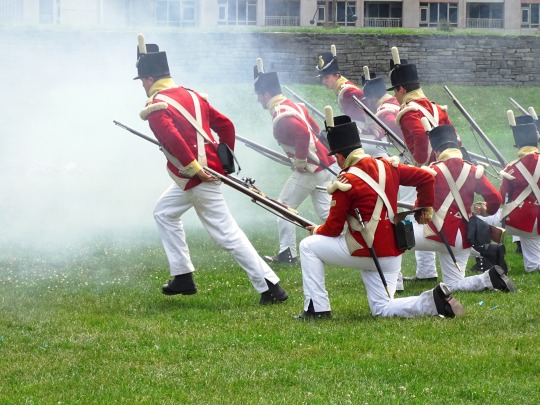
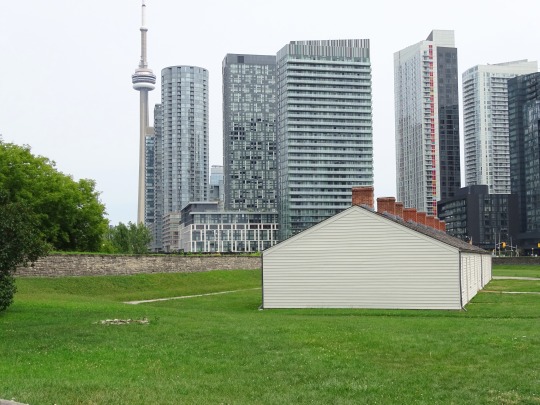






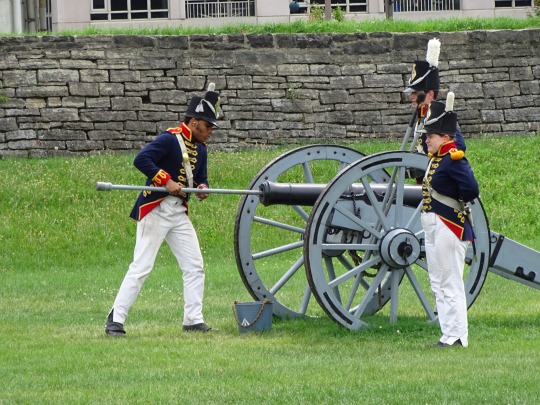
War of 1812: American troops captured York, the capital of Upper Canada, in the Battle of York on April 27, 1813.
#Fort York National Historic Site#Fort York Squad#historical reenactment#travel#Toronto#Ontario#Canada#summer 2018#original photography#vacation#Fort York Guard Royal Artillery#6-pounder field gun#War of 1812#US troops#captured#Battle of York#27 April 1813#110th anniversary#US history#Canadian history#architecture#cityscape#tourist attraction#landmark
4 notes
·
View notes
Text
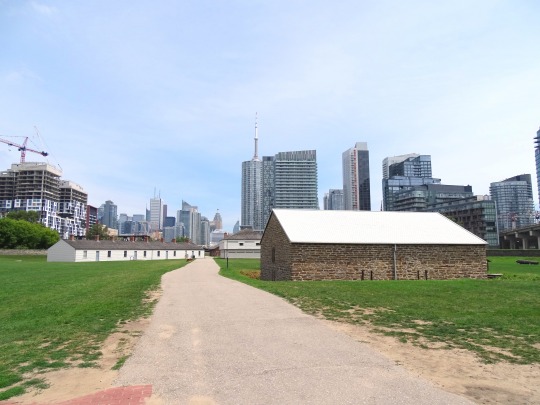

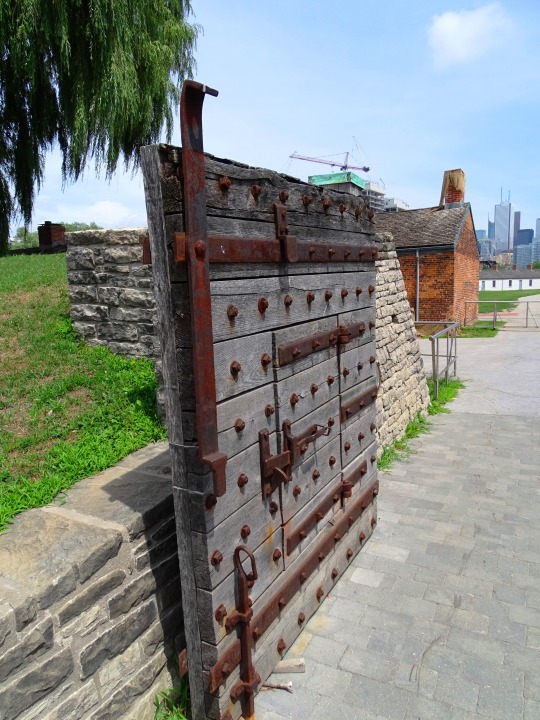
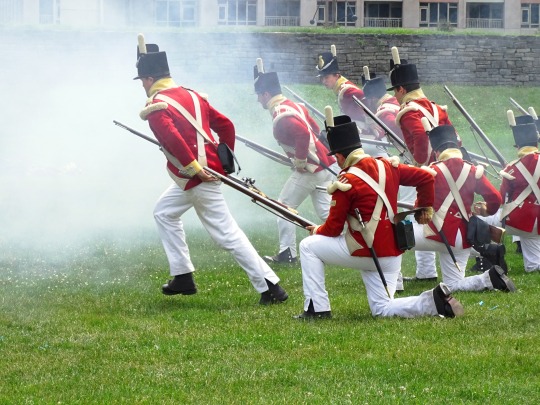






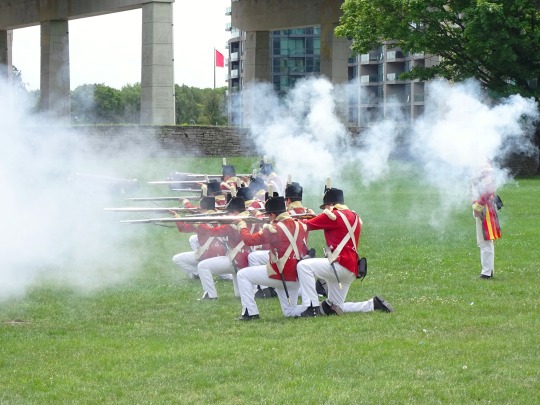


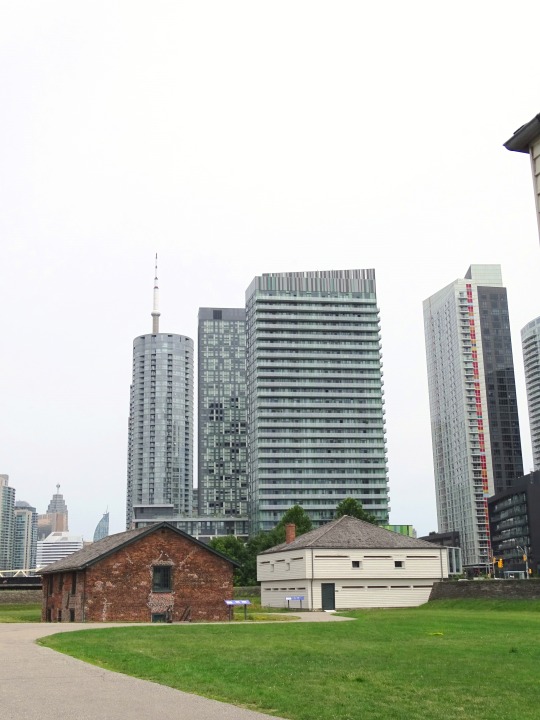





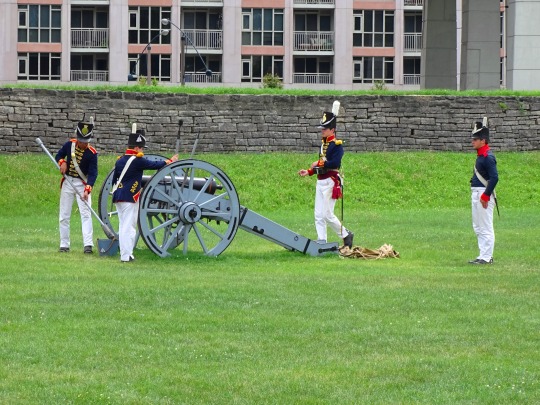
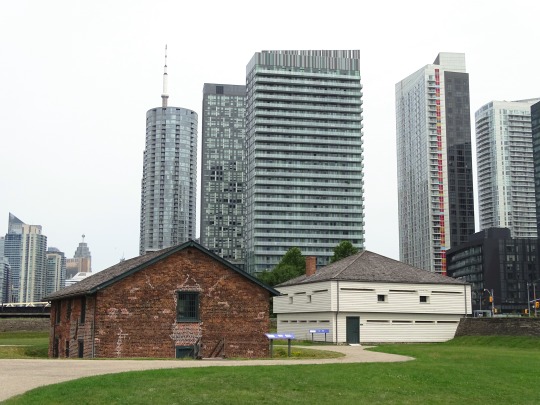


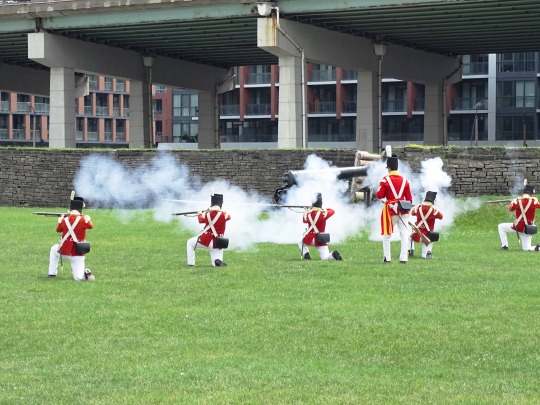
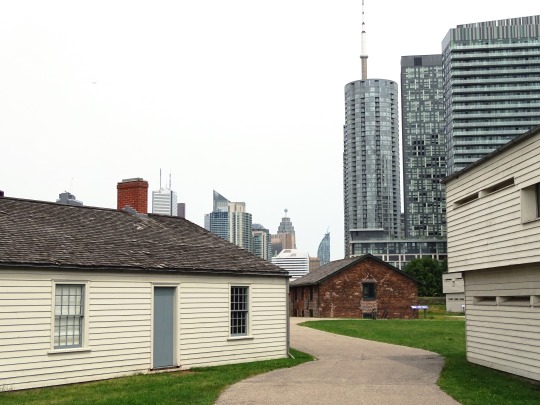



War of 1812: American troops captured York, the capital of Upper Canada, in the Battle of York on April 27, 1813.
#War of 1812#US troops#captured#Fort York National Historic Site of Canada#Battle of York#27 April 1813#original photography#travel#tourist attraction#landmark#museum#cityscape#historical reenactment#architecture#Ontario#summer 2018#Canada#Fort York Squad#Fort York Guard#Fort York Guard Royal Artillery#cannon#barrack#lawn#vacation#anniversary#US history#Canadian history
0 notes
Photo
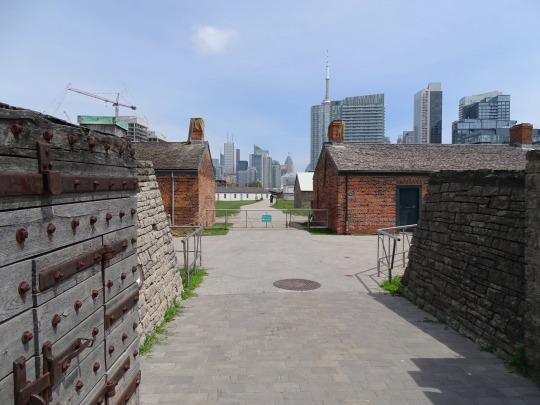
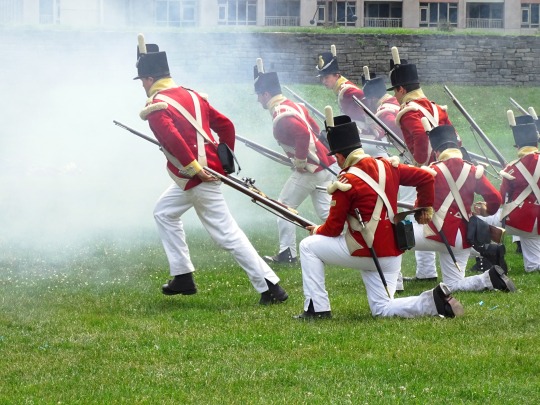
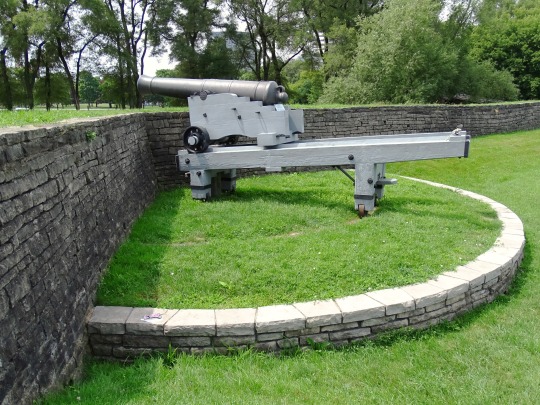

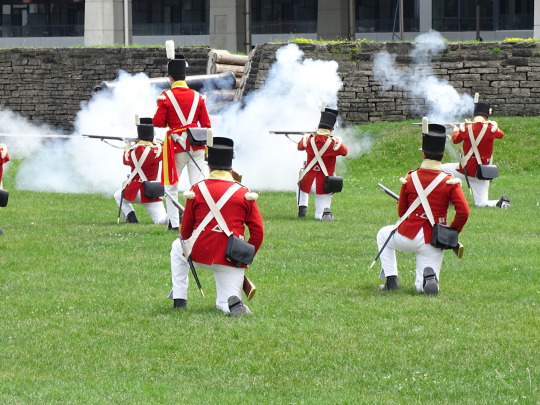
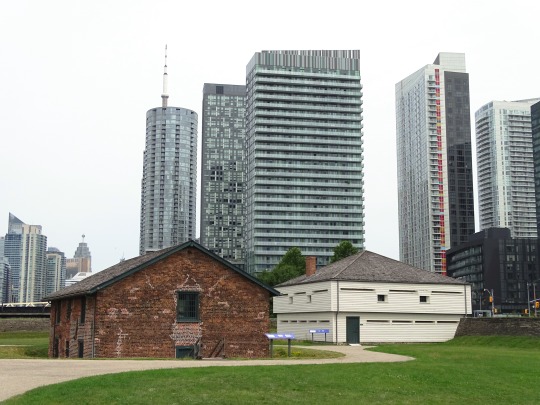
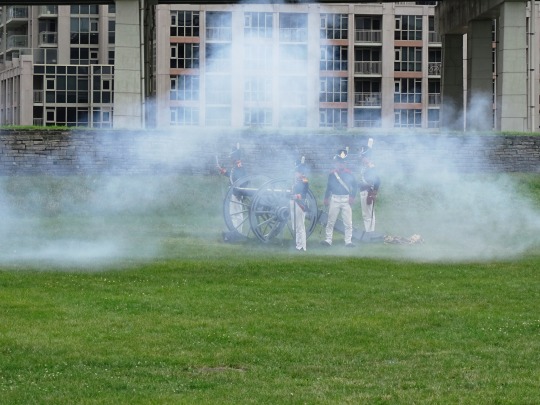

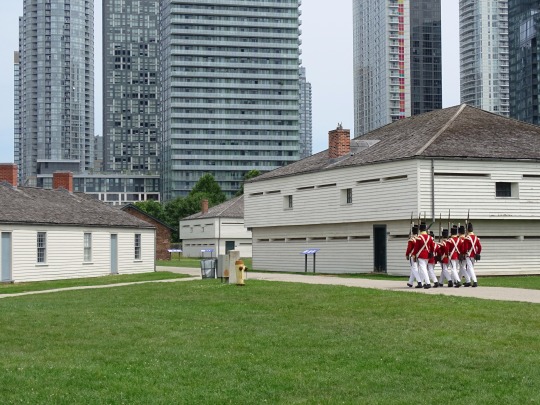

War of 1812: American troops captured York, the capital of Upper Canada, in the Battle of York on April 27, 1813.
#War of 1812#York#captured#Battle of York#27 April 1813#anniversary#US troops#military history#original photography#Toronto#Ontario#Canada#travel#Fort York National Historic Site#cannon#historical reenactment#Canadian Regiment of Fencible Infantry#Fort York Guard Royal Artillery#musketmen#6-pounder field gun#cityscape#architecture#tourist attraction#museum#summer 2018#vacation#uniform
1 note
·
View note
Photo


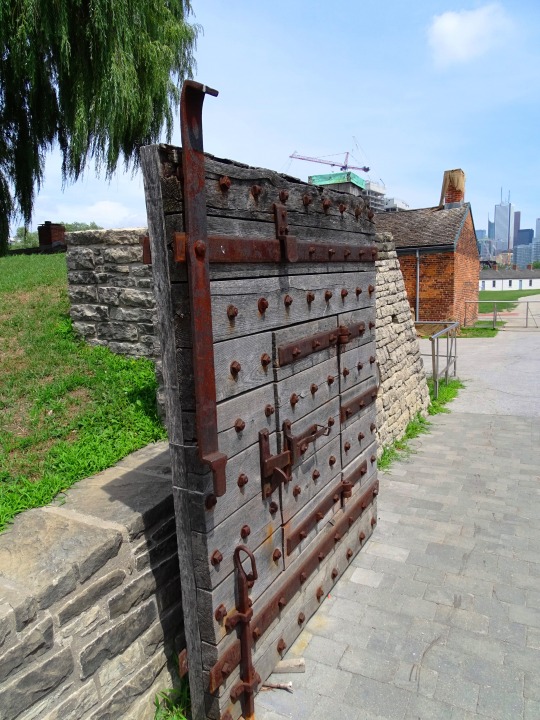
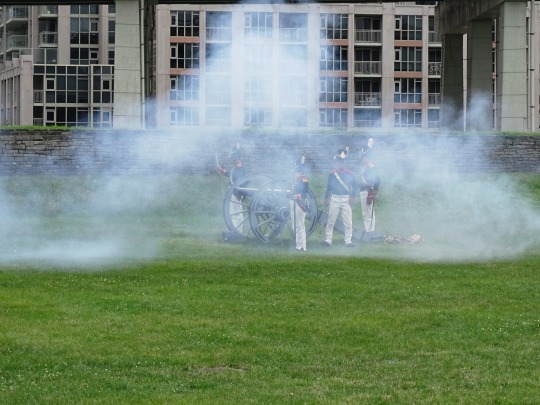

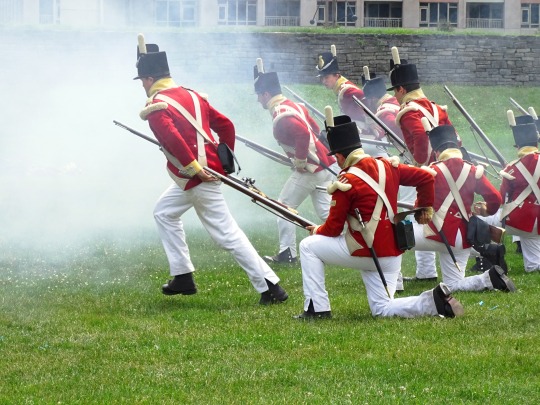


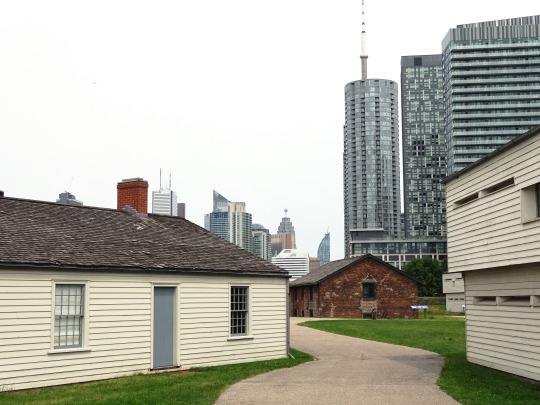
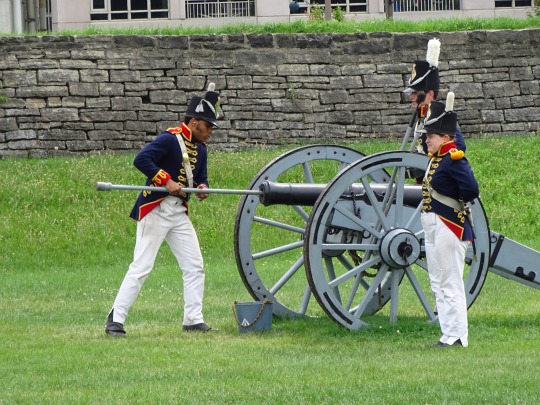
War of 1812: American troops captured York, the capital of Upper Canada, in the Battle of York on April 27, 1813.
#War of 1812#US troops#captured#Fort York National Historic Site of Canada#Battle of York#27 April 1813#original photography#travel#tourist attraction#landmark#museum#cityscape#historical reenactment#architecture#Ontario#summer 2018#Canada#Fort York Squad#Fort York Guard#Fort York Guard Royal Artillery#cannon#barrack#lawn#vacation#anniversary#US history#Canadian history
0 notes
Photo

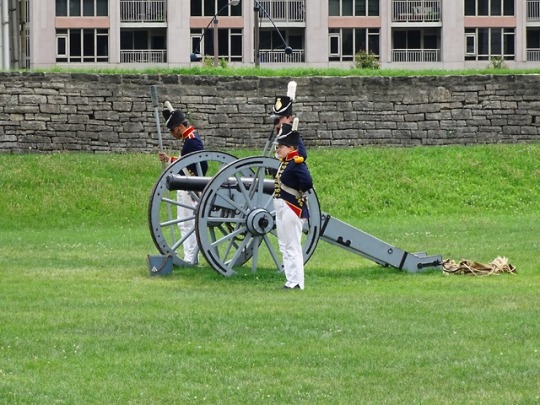
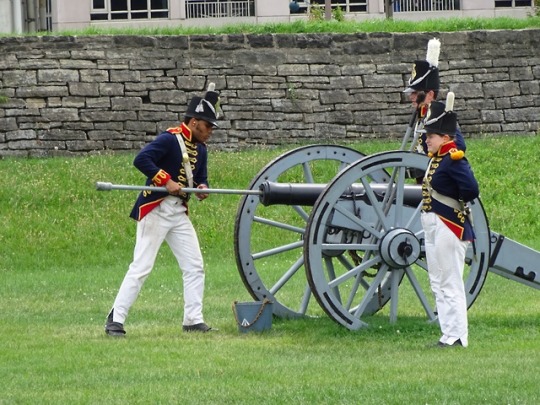
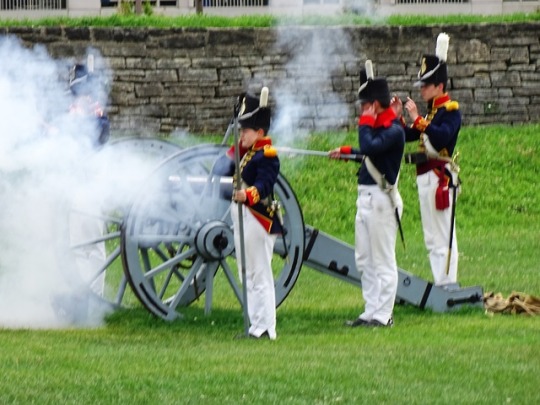
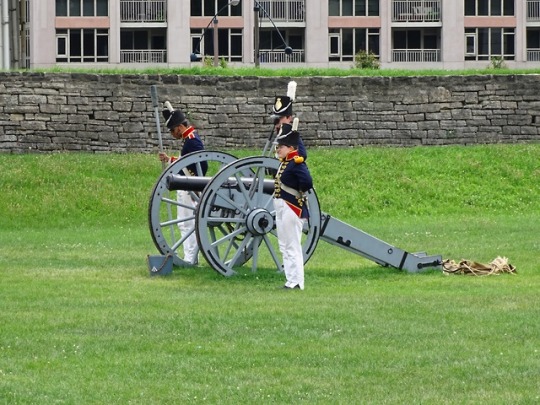


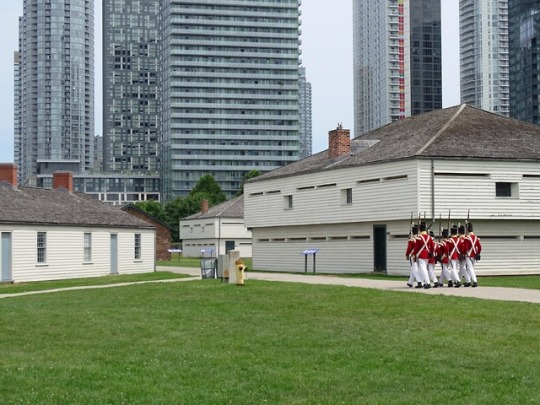

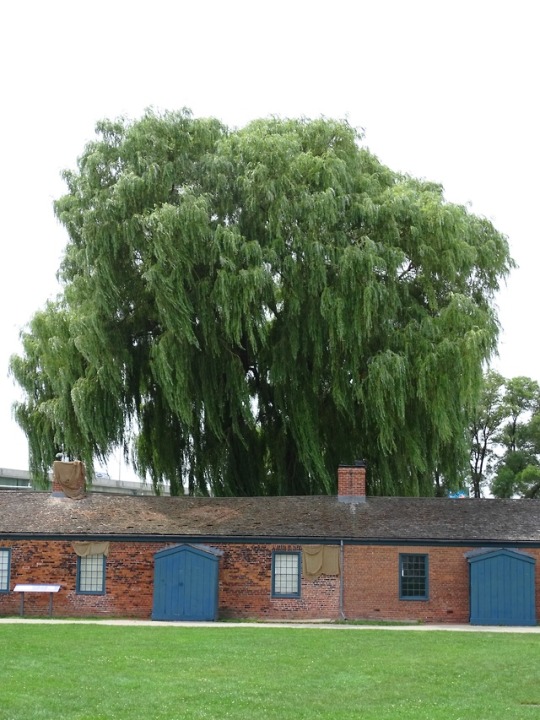
Fort York National Historic Site of Canada, Toronto (No. 9)
Uniforms
The Fort York Drums wears the uniform of the Canadian Regiment of Fencible Infantry, a unit that saw action throughout Canada during the War of 1812, and was garrisoned at Fort York in 1815. It is appropriate that the Drums should represent this regiment, as the fort that stands today was for the most part complete in 1815, and the entire regiment was garrisoned there. This regiment was a yellow-faced battalion, meaning that the regular infantryman wore a red coat with yellow facings (collar and cuffs). This colour distinction allowed commanders to distinguish between regiments, as every regiment was assigned its own facing colour.
The drummers of a non-Royal regiment wore "reversed colours." This means that their coats were yellow with red facings. This reversal allowed the drummers to stand out from the infantrymen. This distinction may have been due to the fact that a Corps of Drums was an object of pride for a regiment, and so it made sense to dress them differently. It is also a functional difference, as music was used to communicate with the army, so it was necessary to be able to identify the drummers quickly in garrison or on the battle field.
Each drummer (or fifer) was issued a fife case and sword. The fife case was likely a brass tubular case, worn over the shoulder and suspended by a belt. The sword was similar to the non-commissioned officer's sword of the period, and was suspended from a sword belt over the opposite shoulder of the fife case. The sword was intended as a symbol of importance rather than a weapon. In addition, many regiments gave their fifers and drummers the more traditional bear skin cap rather than the more common shacko. It is quite possible that the drummers of the Canadian Regiment had bear skin caps.
Muskets
The Fort York Guard carries the Brown Bess musket, which was the typical firearm of the British army during the War of 1812. The musket is one of the longest-used military firearms in history, remaining in official service between the mid 1700s up to 1839. It was a firearm that had many pros and cons, but it was an effective balance of technology and practicality.
Pros:
The musket could be loaded and fired relatively quickly. A well trained soldier could fire as many as three shots per minute, compared to only one or two shots per minute with a typical rifle of the period.
The musket was relatively cheap to mass produce.
The musket had interchangeable parts, which meant that if a part broke while in the field it could easily be replaced.
The construction of the musket was robust and durable.
Cons:
The musket was not particularly accurate. This meant that European soldiers fought in long lines and fired together en masse to maximize the effectiveness of the musket.
The misfire rate was high (estimates are as high as one in six shots misfired).
A musket is not accurate at distances greater than 100 yards. Close contact was necessary for deadly results.
Source
#Fort York National Historic Site of Canada#Fort York National Historic Site#travel#Fort York Heritage Conservation District#Old Fort York#Fort York Guard#Canada#Ontario#Toronto#vacation#summer 2018#museum#landmark#original photography#Fort York Squad#Fort York Guard Royal Artillery#6-pounder field gun#shacko#smoke#Gardiner Expressway#demonstration#military re-enactment unit#history#Officers' Blue Barracks#canon
0 notes
Photo


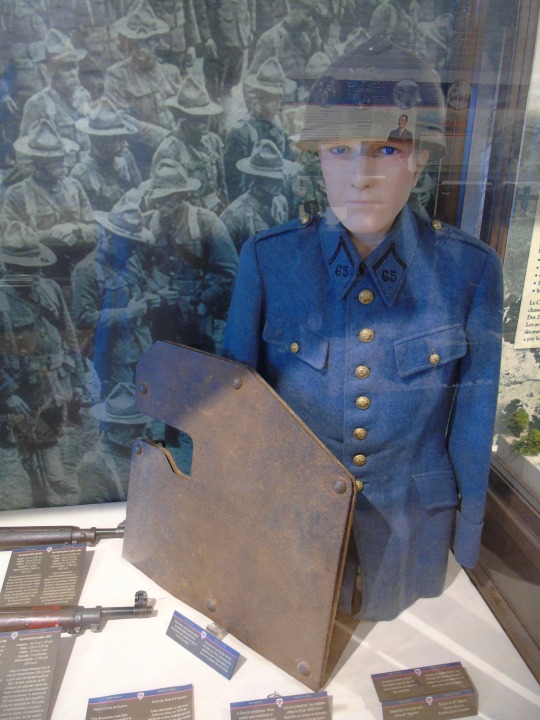





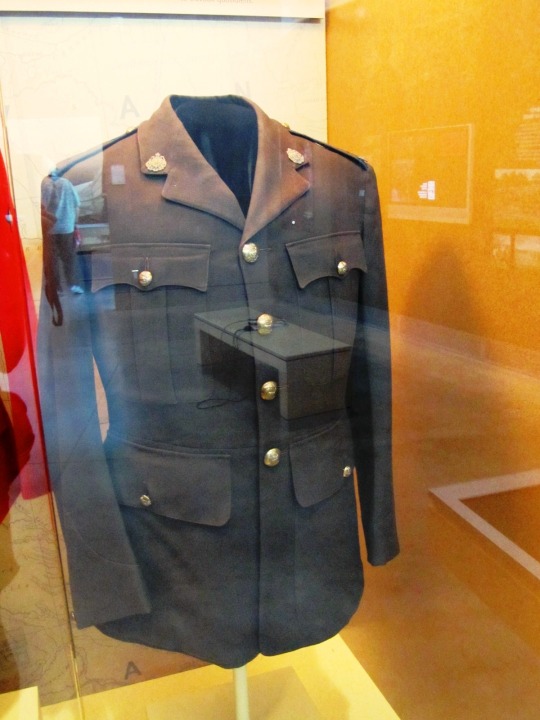

National Button Day
National Button Day is celebrated on November 16 of every year. National Button Day is a celebration of buttons, button makers and button collectors. The Button is a small fastener made of plastic to secure two pieces of fabric together. The buttons are often attached to the articles of clothing, but it can also be used on things like bags and wallets. If you think the buttons doesn’t deserve a day, then think about life without buttons. Hence Button Day is a special day to honor the makers of the Button and enjoy the day by collecting some Buttons.
History of National Button Day
National Button Society, founded in 1938 created the National Button Day as a day to collect some innovative buttons and to make some handmade crafts with those buttons. The size of the buttons may vary according to their uses. The buttons in Shirts are generally small and spaced close together. The buttons on the coat are larger and spaced further apart. The size of the buttons are measured in lignes (1inch=40linges). The buttons for men’s are always on the right side of the shirt as they always tend to dress and most of the men’s are right-handed. For Women’s, the buttons are on the left side as they rely on maids to help dress them and it is always easier for the servant to button from the other side.
How to Celebrate National Button Day
The best way to celebrate the National Button Day is by collecting some buttons from the old clothes. It can be used to repair the clothes which lost their button. Buttons are also a great source for craft ideas. With buttons, create some cute gadgets like picture frames, clocks, lampshades, purses, bags, headbands, costume jewelry and much more. Then you can present those gadgets to your loved ones.
Source
#National Button Day#NationalButtonDay#RCMP Heritage Centre#Canada#USA#Regina#original photography#travel#clothes#uniform#Red Serge#Royal 22e Régiment Guard#Québec Citadel#71st Regiment of Foot#Royal Artillery's blue jackets#Fort York National Historic Site#Toronto#Kings Landing Historical Settlement#Army Museum Halifax Citadel#Fort George
3 notes
·
View notes
Photo
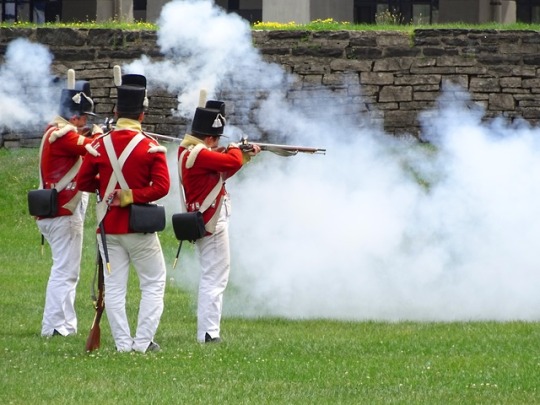
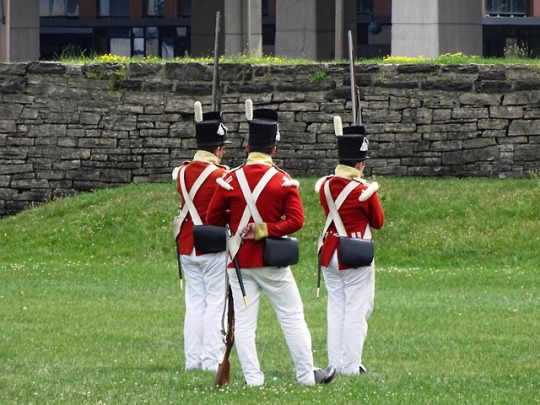
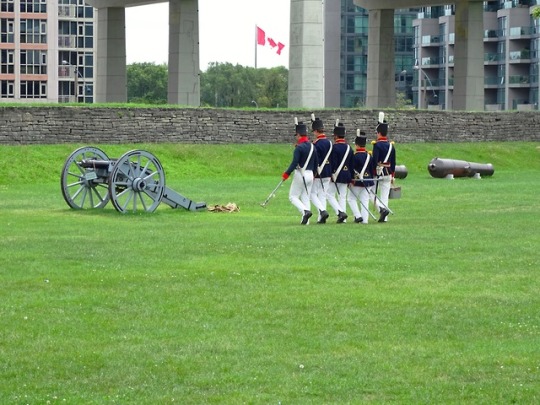




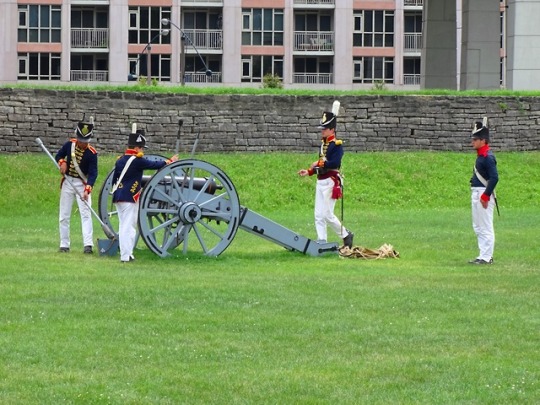
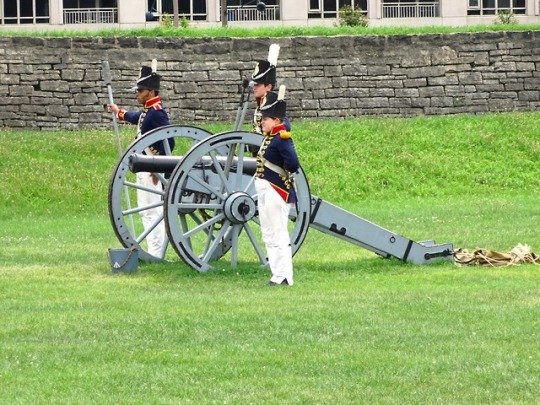
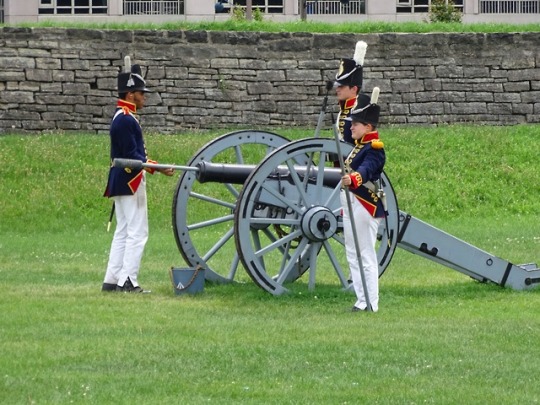
Fort York National Historic Site of Canada, Toronto (No. 8)
Fort York Squad
The Fort York Squad was re-established by the Toronto Historical Board in 1994. Originally, the Guard wore the uniform of the grenadier company of the 8th Regiment of Foot, which was a unit that played a prominent role in the Battle of York in 1813. It now wears the uniform of a battalion company of the Canadian Regiment of Fencible Infantry. This regiment was garrisoned at Fort York in 1815.
The Squad performs daily in conjunction with the Fort York Drums, but it also travels, performing at historic sites across Ontario to promote the fort and at various events in Toronto. The drill performed by the Squad accurately reflects the War of 1812 period, and is taken from original drill manuals used by His Majesty' s forces in England and abroad. Every effort is made to provide an authentic depiction of a squad of soldiers that may have been seen at Fort York in 1815.
The Fort York Squad has competed in the province-wide Fort George Drill competition in Niagara Falls every year since 1999, and has won the competition several times.
Royal Artillery
A significant part of the Fort York Guard, the Royal Artillery detachments man the field guns that are fired daily during the summer months.
The Royal Artillery has been an important part of Fort York since its first construction in 1793. The strength of a fort's artillery often determines the strength of a fort and its ability to repel an attack by land or sea. Fort York has one of Canada's most diverse collections of original guns. This collection dates from the mid-17th century right up to the 1870's, when the British army left Canada. Many of the fort's ordinance are on display around the fort and in a new artillery exhibit in Blockhouse (No. 2).
The Guard's Artillery Detachments fire the fort's reproduction Cohorn mortar, a 1-pounder and a 6-pounder field gun. They wear the Royal Artillery's distinctive blue jackets with yellow regimental lace, along with their unique style shako (caps).
Source
#Fort York National Historic Site of Canada#Fort York National Historic Site#travel#Fort York Heritage Conservation District#Old Fort York#museum#Toronto#Ontario#Canada#summer 2018#original photography#architecture#cityscape#Canadian Regiment of Fencible Infantry#Fort York Guard#Fort York Squad#military re-enactment unit#Brown Bess musket#6-pounder field gun#blue jackets#shako#Fort York Guard Royal Artillery
1 note
·
View note
Photo


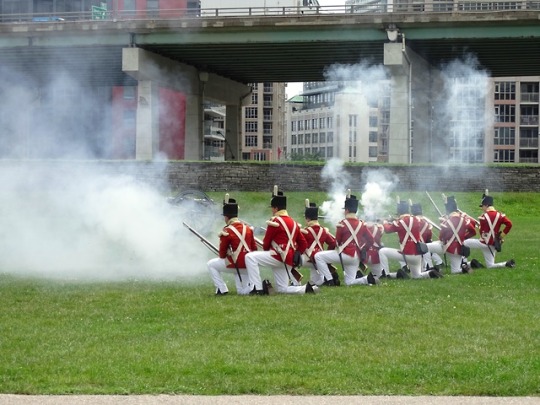







Fort York National Historic Site of Canada, Toronto (No. 6)
The Canadian Regiment of Fencible Infantry, commonly known as the Canadian Regiment or the Canadian Fencibles, saw service in Upper and Lower Canada during the early 19th century, notably during the Anglo-American War of 1812.
The regiment was originally raised in Scotland amongst highlanders keen on emigrating to Canada in 1803-4. The unit was to see service only in British North America. However, misunderstandings regarding the terms of enlistment and rumours that the regiment would be sent to India caused the recruits to mutiny in Glasgow. In response, the men were all discharged in the fall of 1804. Subsequently, the commissioned officers and a skeleton crew of other ranks were sent to re-raise the regiment in the Canadas.
Initially, the commissioned and non-commissioned officers were Scottish while the core of the regiment would be French and English-speaking Canadians. The Scottish roots of the regiment are evident in the regiment's coat of arms with a thistle. The regiment was created in Montreal in 1803, but did not begin recruitment until 1805.
By the start of the War of 1812, the regiment's strength was at 600 men.
The Canadian Fencibles first received scholarly attention when Scottish popular historian John Prebble featured the regiment's 1804 mutiny in his 1975 book Mutiny: Highland Regiments in Revolt. Canadian historian Robert Henderson also explored the history of the unit in a series of articles, several of which appeared in Military Illustrated in 1991. Most recently, Eamonn O'Keeffe authored a book chapter on the regiment's fife and drum corps and band. In an article for Canadian Military History, O'Keeffe also shed light on the inner workings of the regiment through analysis of the court martial of Canadian Fencibles Lieutenant John de Hertel, who was tried for assaulting a fellow officer in Fort York's Blue Barracks in 1815.
Châteauguay (1813)
Crysler's Farm (1813)
Lacolle Mills (1814)
The Canadian Regiment was disbanded in July and August 1816 at Kingston and Montreal. The history and heritage of the regiment, together with its Battle Honours for Châteauguay and Crysler's Farm, are commemorated within the Canadian Army by the Royal 22e Régiment.
It was recreated in 1984 as a military re-enactment unit, continuing to this day with both military and civilian displays, across Canada and the United States. Participating in recreated battles, youth events and festivals across the country, the group's membership continues to grow with new elements, such as civilian portrayals, artillery and naval elements, being added and expanded, regularly.
The Friends of Fort York now hire students to recreate the regiment at Fort York in Toronto, Ontario during the summer months. This group is known as the Fort York Guard. At the Scout Brigade of Fort George each September, the sub-camp for youth of the Cub Scout program also recreate the regiment.
Source: Wikipedia
#Fort York National Historic Site of Canada#Fort York National Historic Site#travel#Fort York Heritage Conservation District#Old Fort York#Toronto#Ontario#Canada#original photography#summer 2018#vacation#Fort York Guard#historical reenactment#Uniform of Canadian Regiment of Fencible Infantry#musketemen#military re-enactment unit#Brown Bess musket#landmark#tourist attraction#Gardiner Expressway#cannon#architecture#demonstration
1 note
·
View note
Photo

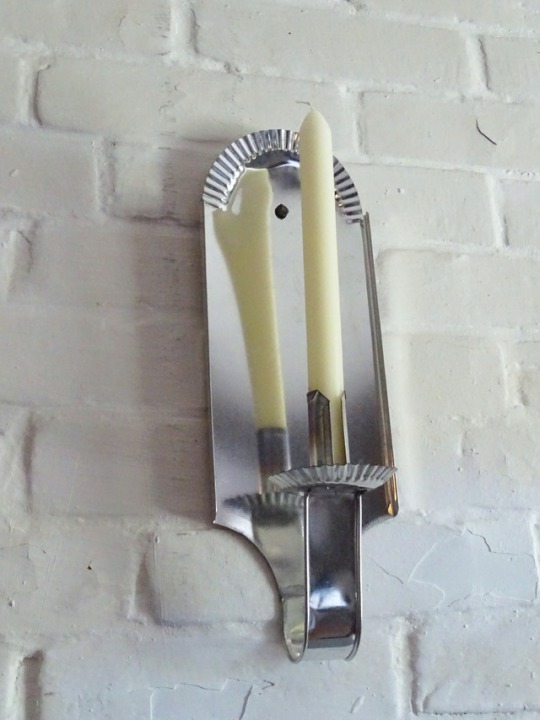
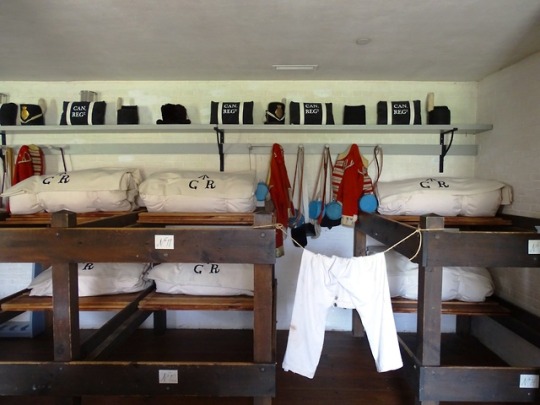
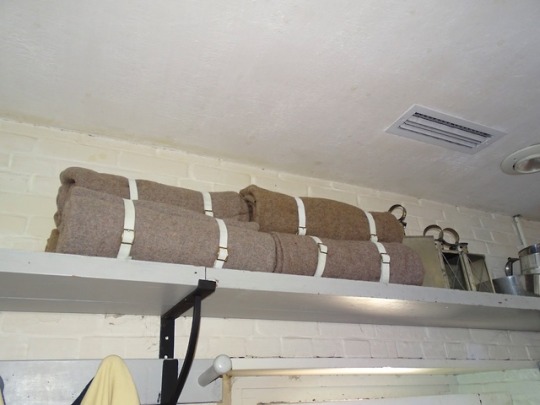


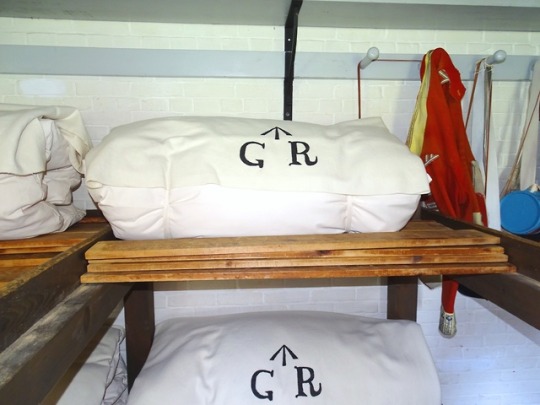
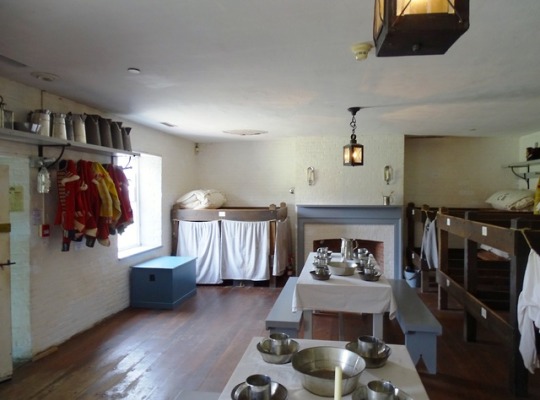


Fort York National Historic Site of Canada, Toronto (No. 3)
Living interpretation has occurred at Fort York since it was designated as a National Historic Site in 1934.
The Fort York Guard consists of a squad of musketmen (Fort York Squad) and musicians (Fort York Drums). Both groups wear the uniforms of the Canadian Regiment of Fencible Infantry which was garrisoned at Fort York in 1815. The Fort York Guard provides historical interpretation at Fort York during the summer months including music, musketry demonstrations, and the recreation of operating guns as detachments of Royal Artillery. The Fort York Guard is sponsored by the Friends of Fort York and Garrison Commons.
The Fort York National Historic Site was established on 25 May 1923, and houses Canada's largest collection of original War of 1812 period buildings. The bulk of its property consists of the area around the old fort. The National Historic Site includes a parcel of land east of Bathurst Street, as well as St. John's Square / Victoria Memorial Square to the northeast. It operates as a museum of the City of Toronto, offering visitors a number of services year round.
The fort's first cemetery at St. John's Square / Victoria Memorial Square is also part of the NHS. The second cemetery for the fort is also located in the Garrison Common section of the site. By the late 19th century twenty eight stones or wooden crosses marked graves, but there were hundreds of mounds. Headstones were later assembled into a memorial wall.
Each April, the site commemorates the US invasion of April 27, 1813, with walking tours, artillery and musket demonstrations, period cooking, and groups portraying units involved in the battle. During the summer months, the site comes alive with the colour and pageantry of the Fort York Guard, and is complimented with tours by professional historical interpreters. In the off-season, the fort is provides educational programs for tour groups including school, scout, guide, and day care groups.
Source: Wikipedia
#Fort York National Historic Site of Canada#Toronto#Ontario#Canada#travel#Fort York Heritage Conservation District#Old Fort York#museum#vacation#summer 2018#original photography#architecture#interior#table#1815 Soldiers' Barrack#cot#fireplace#uniform#coat#candle#lamp#lantern#blanket#old stuff#history#landmark#tourist attraction
1 note
·
View note